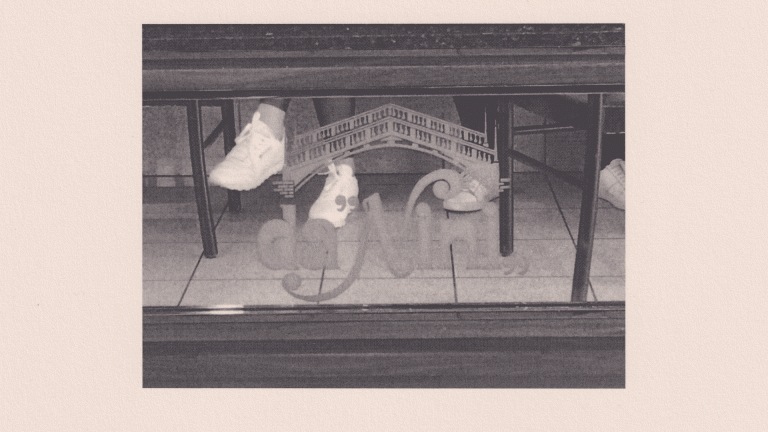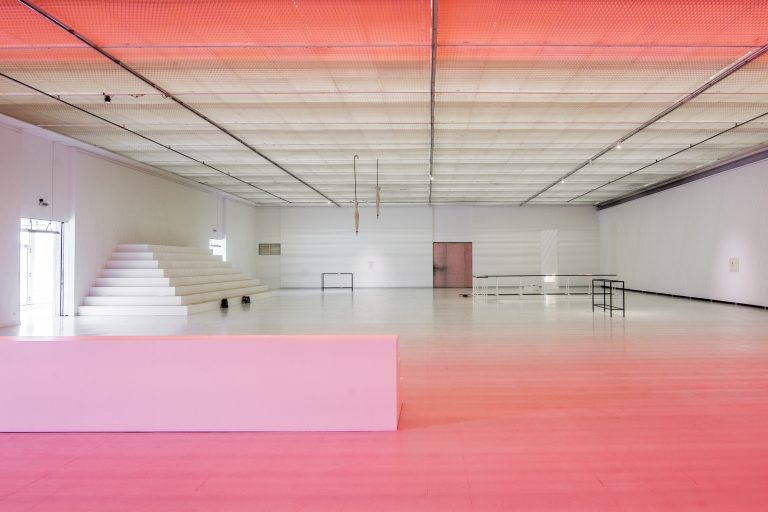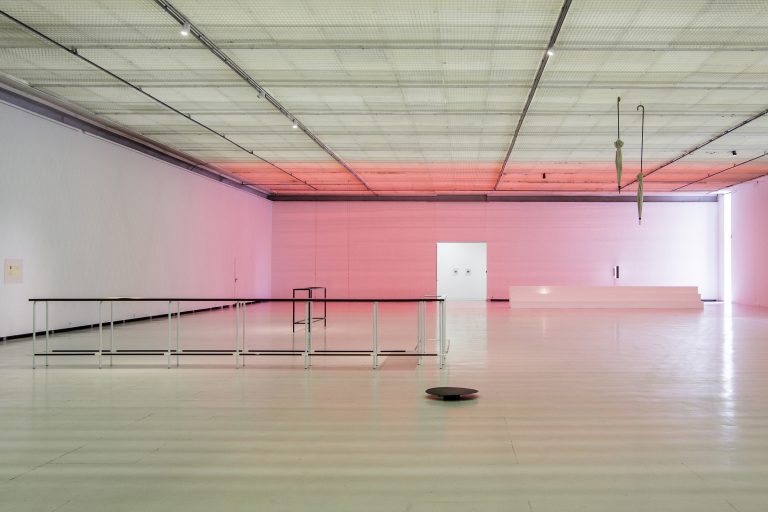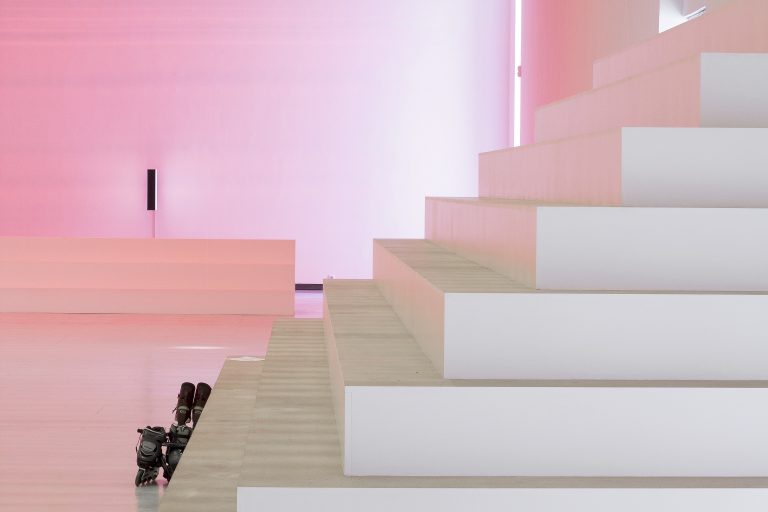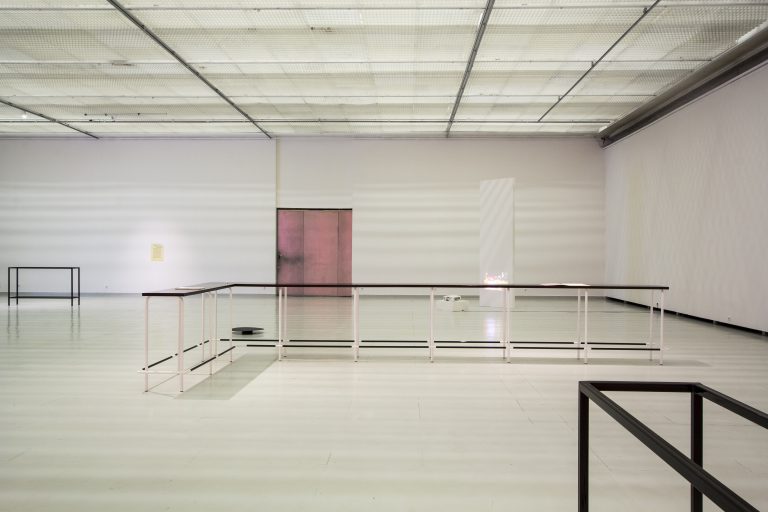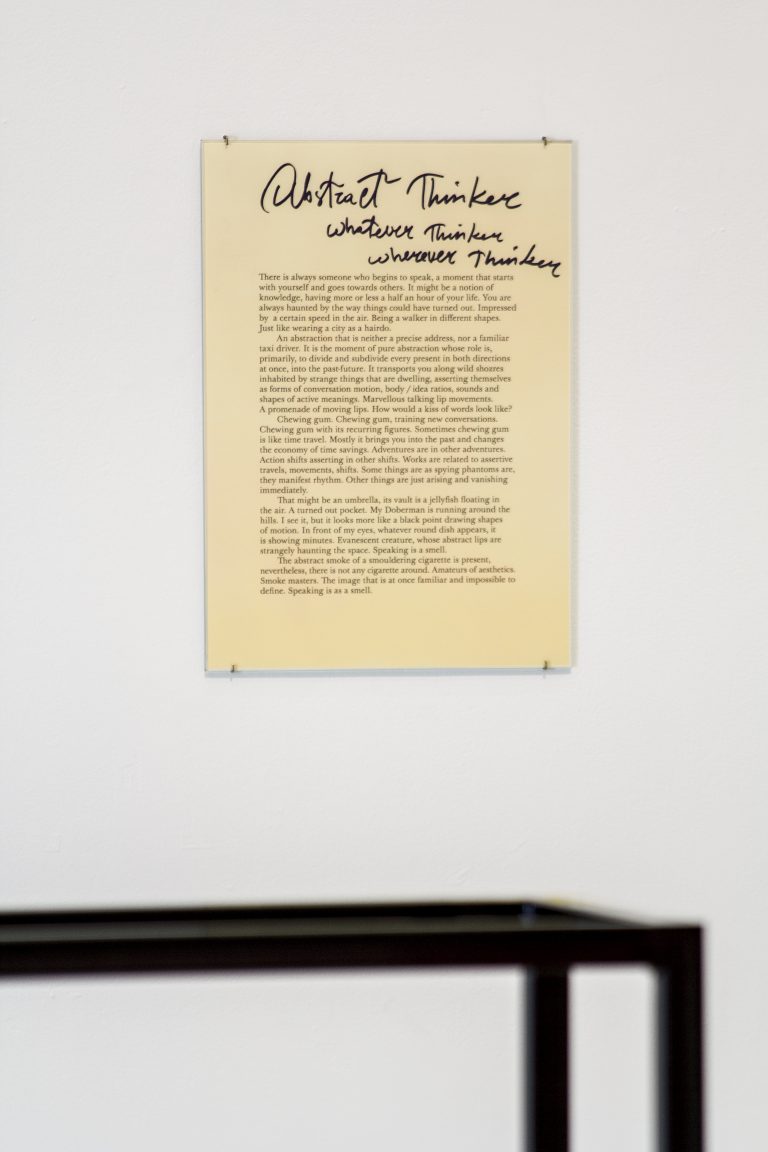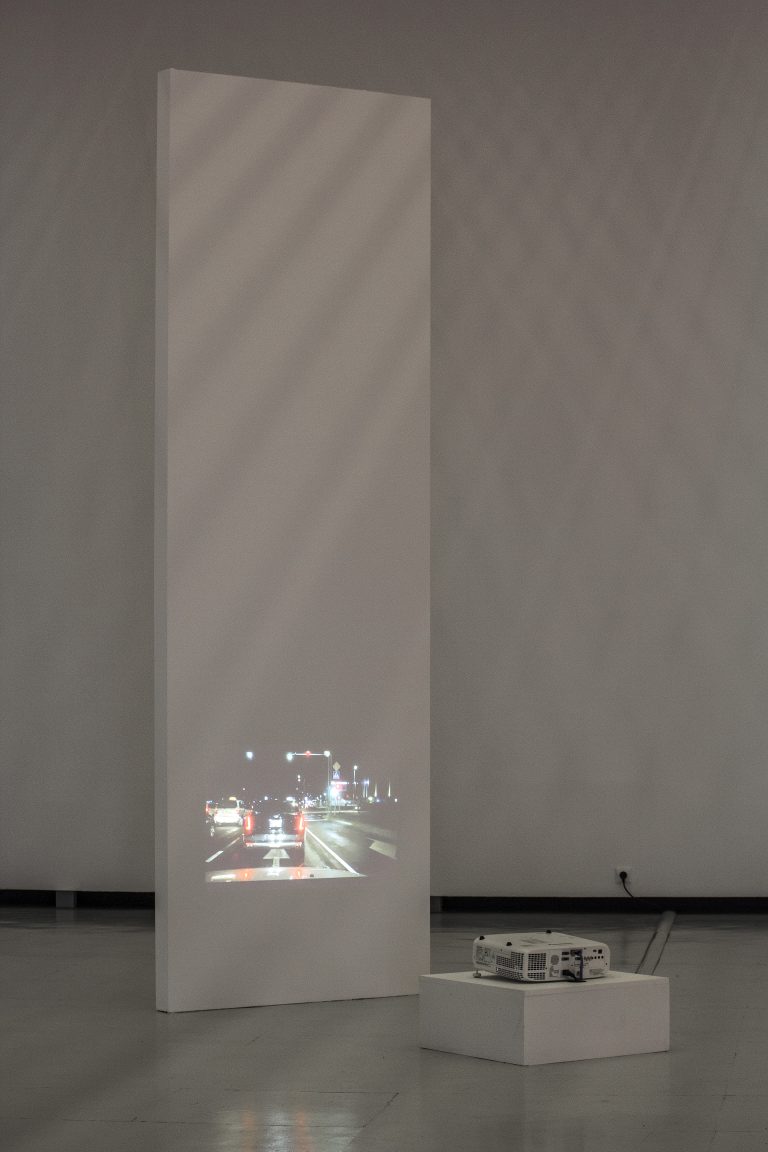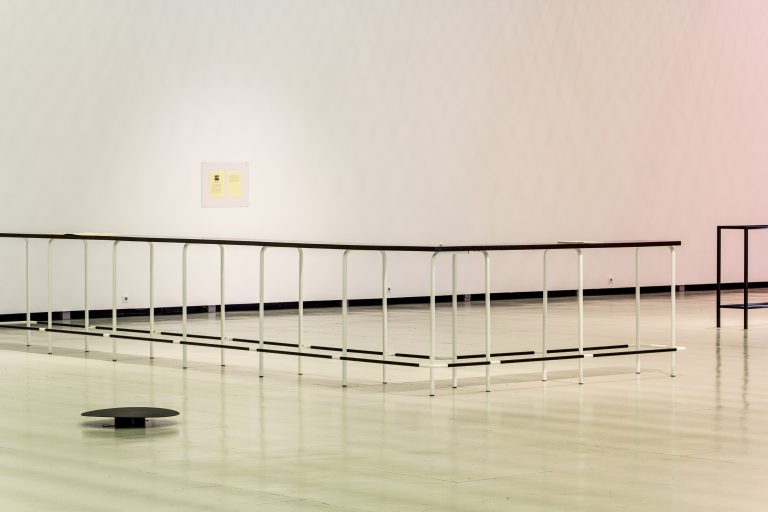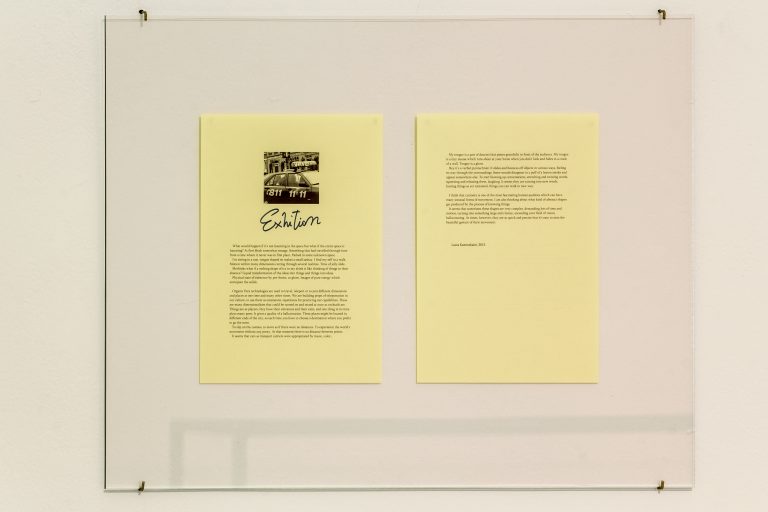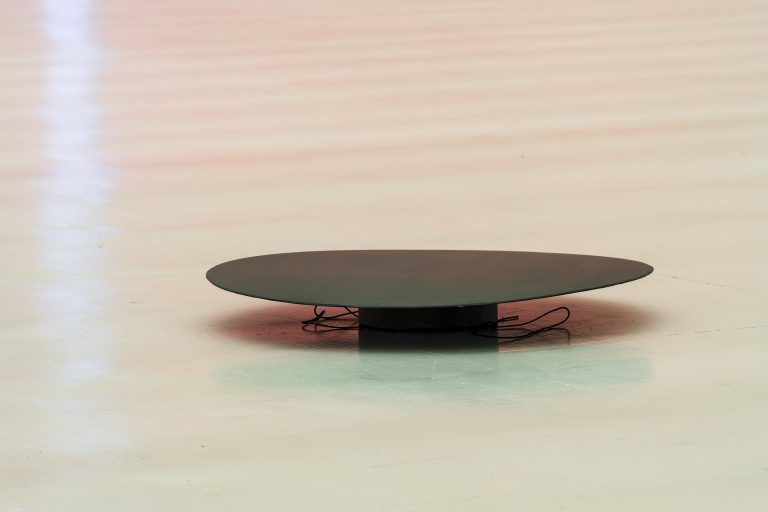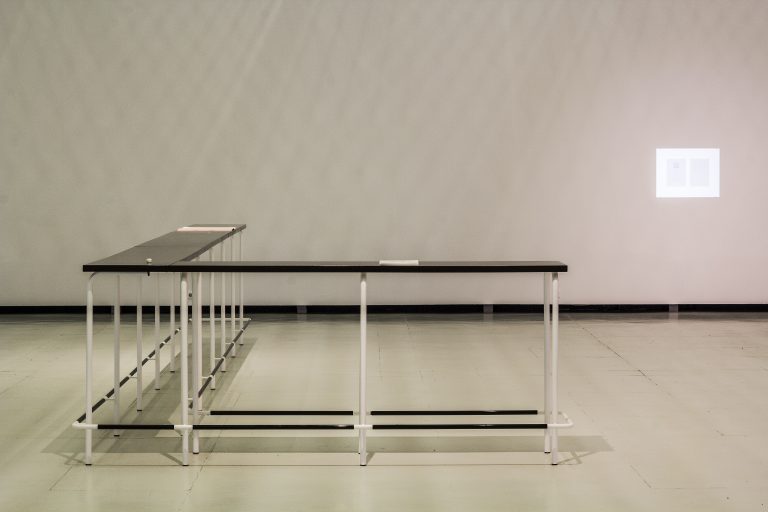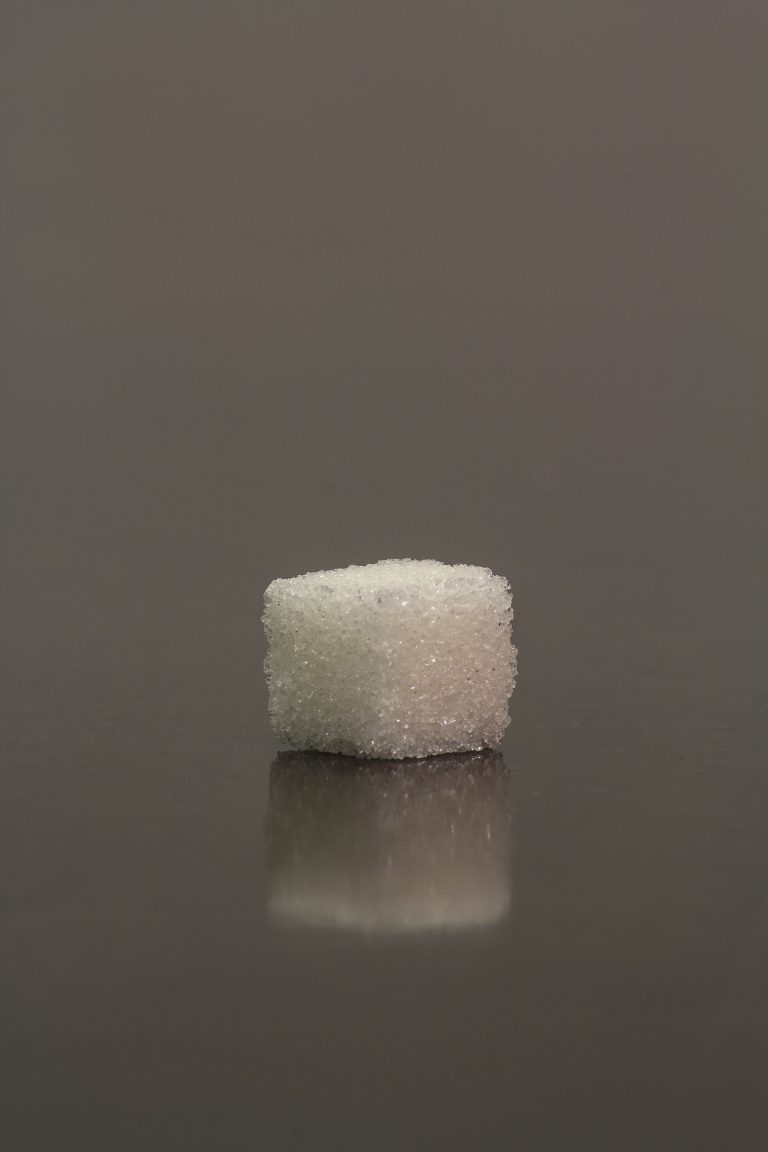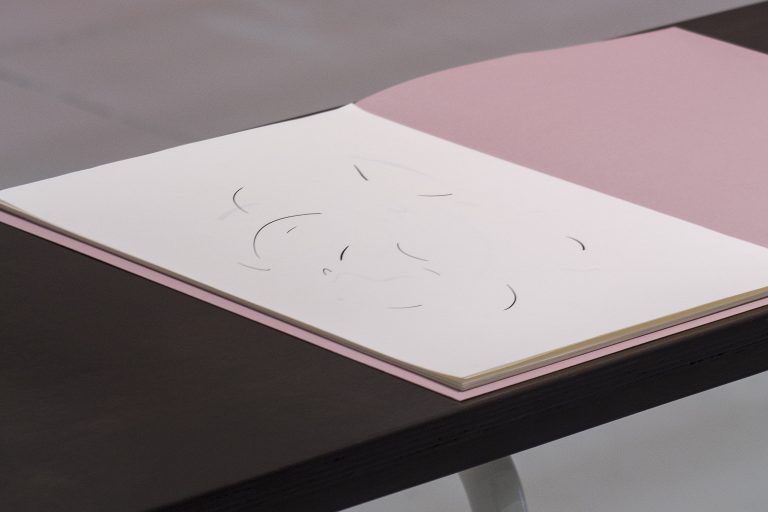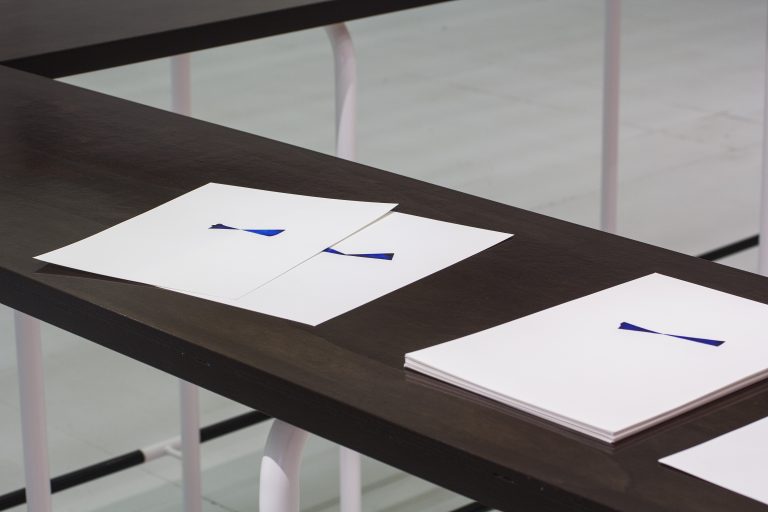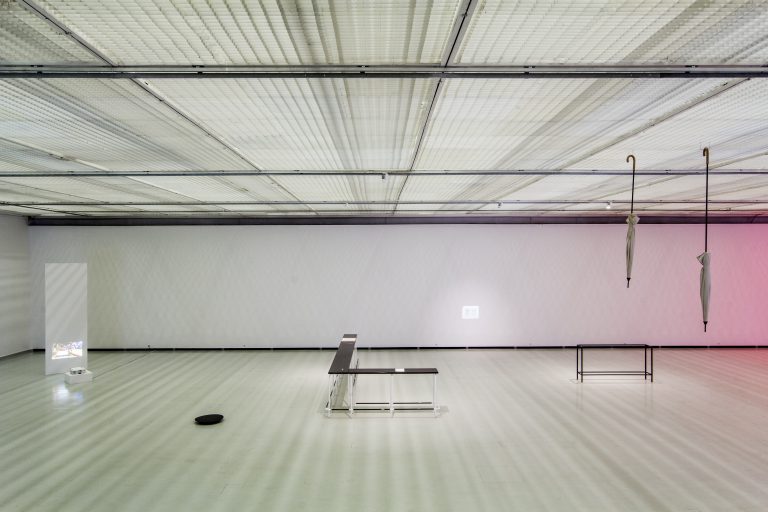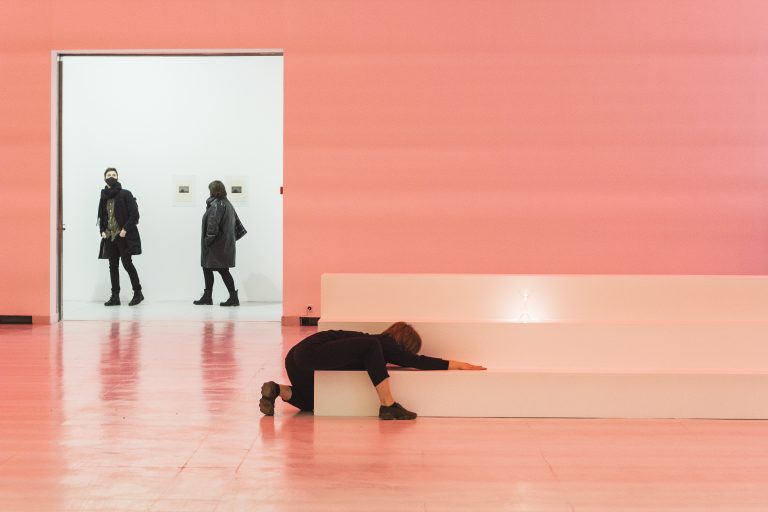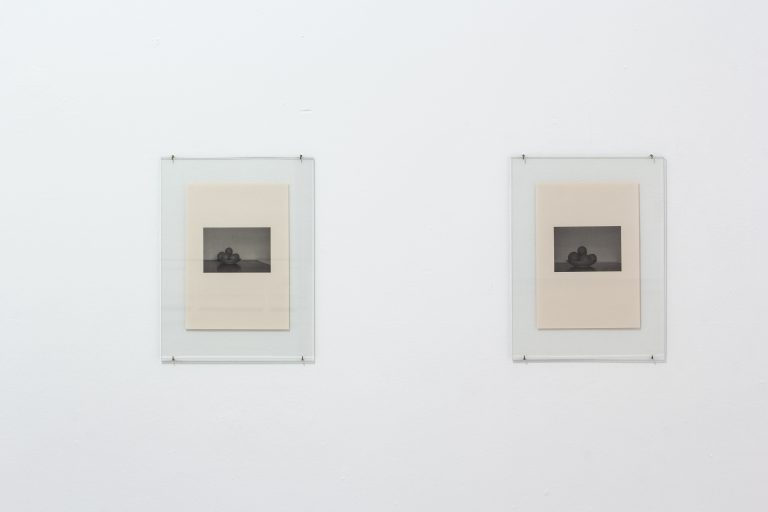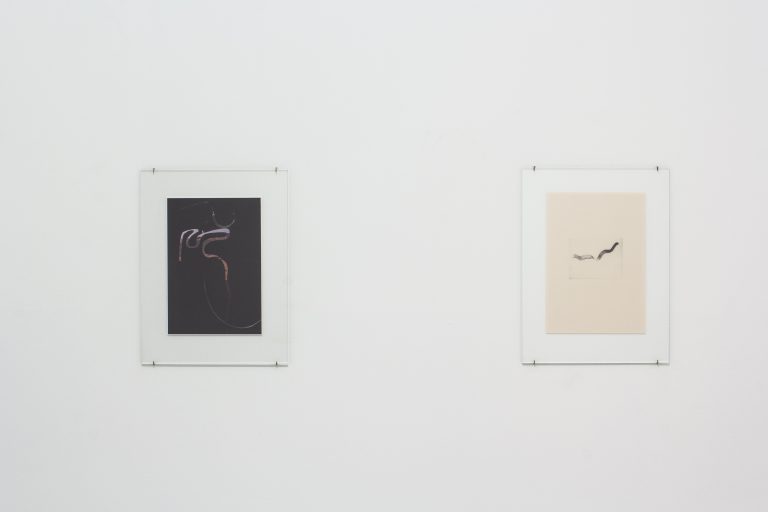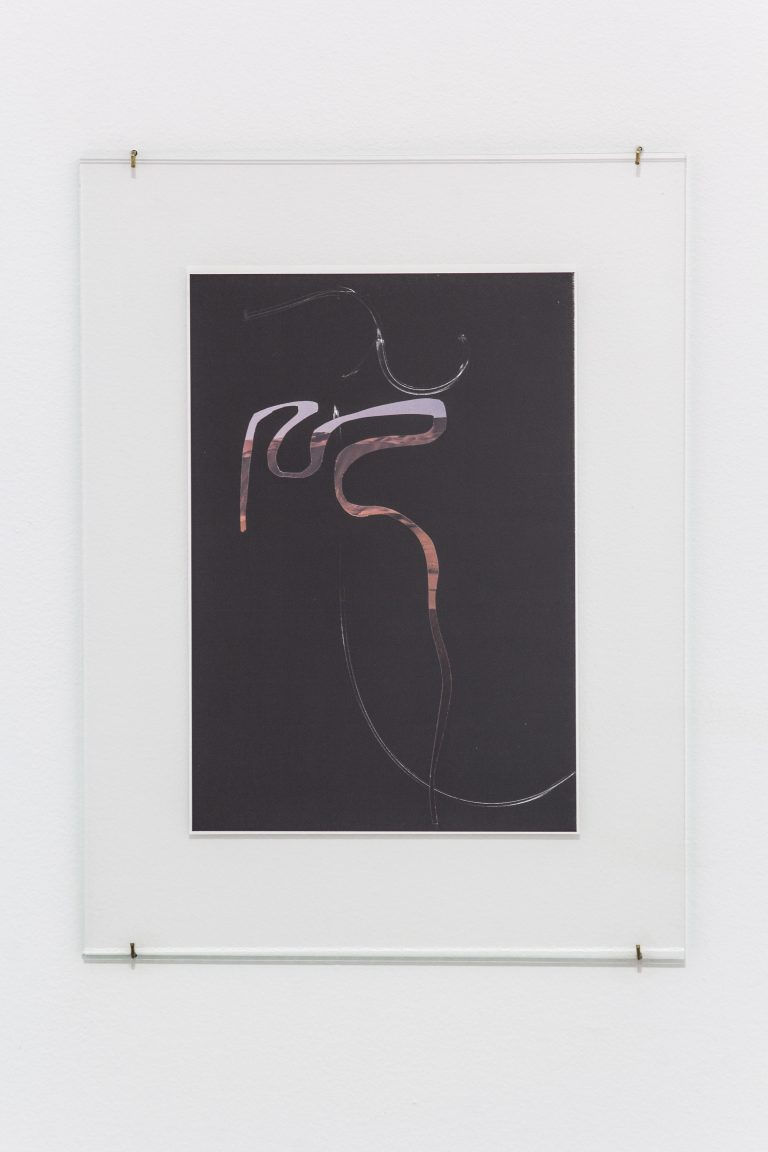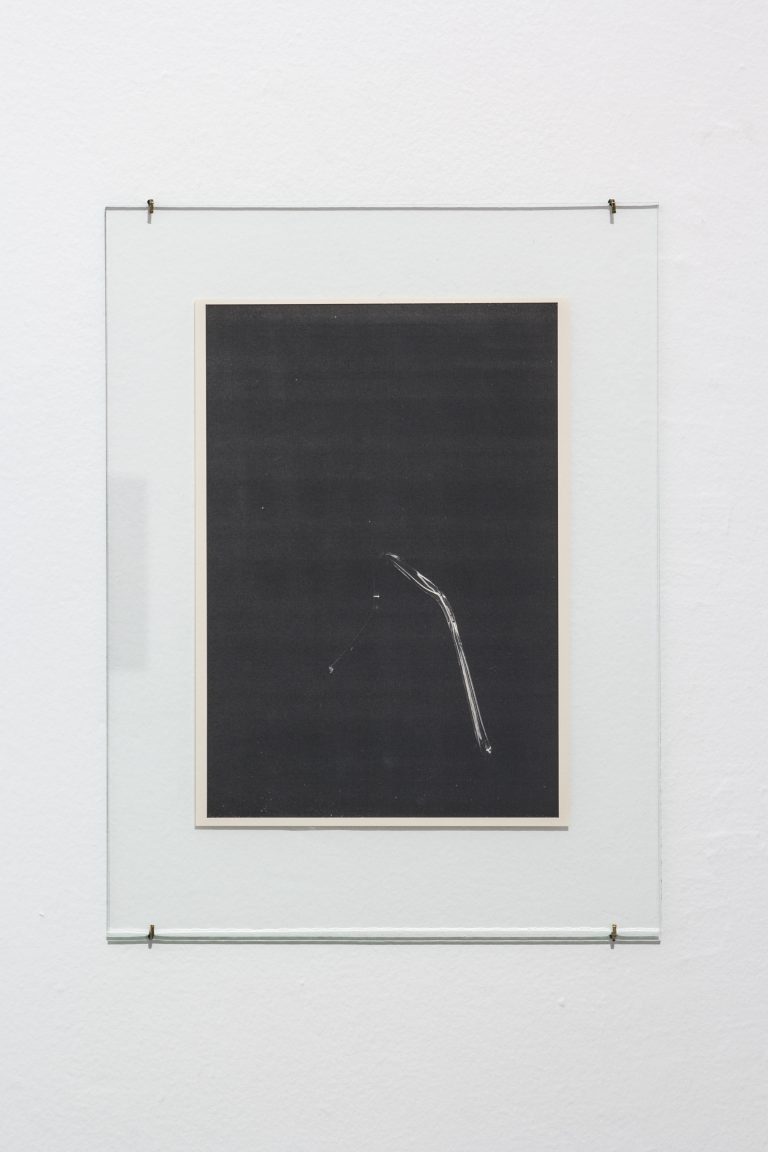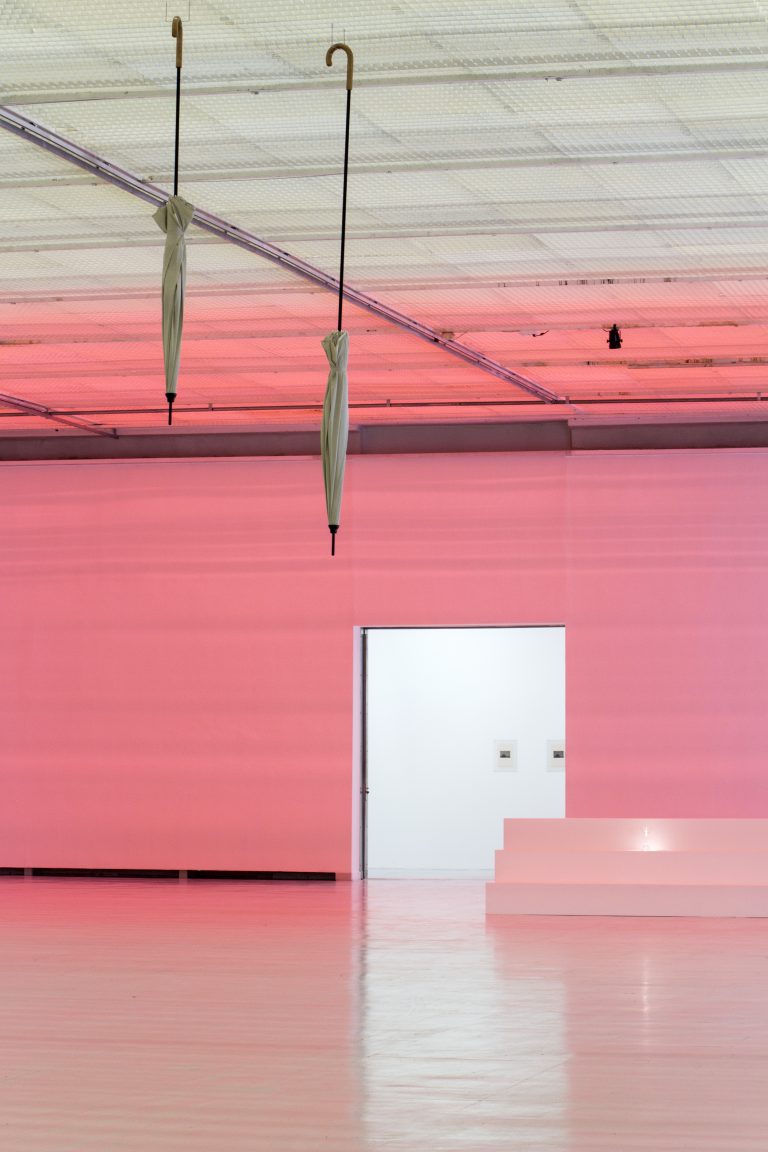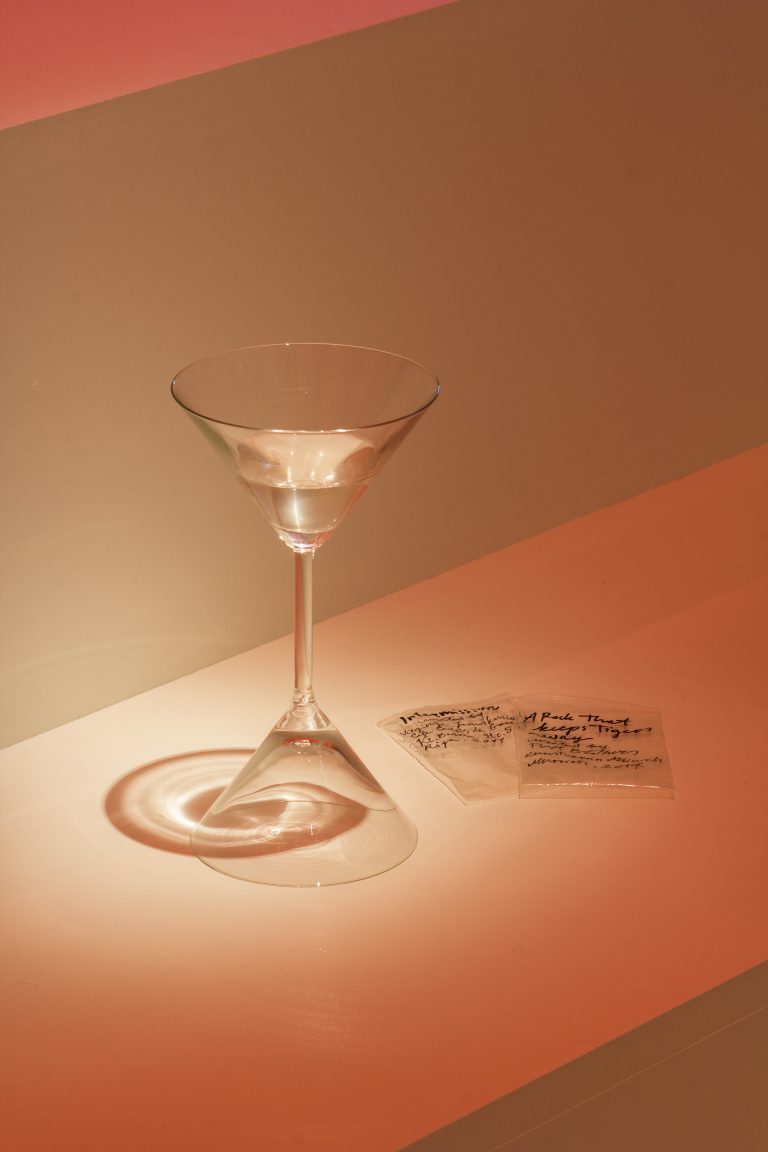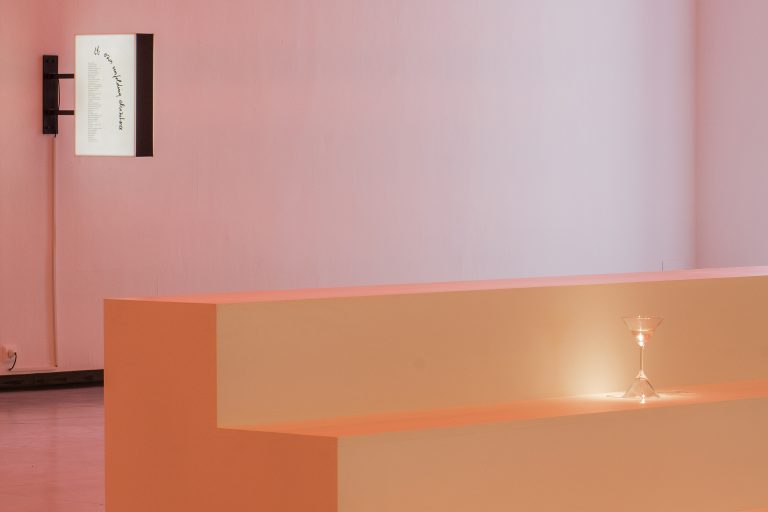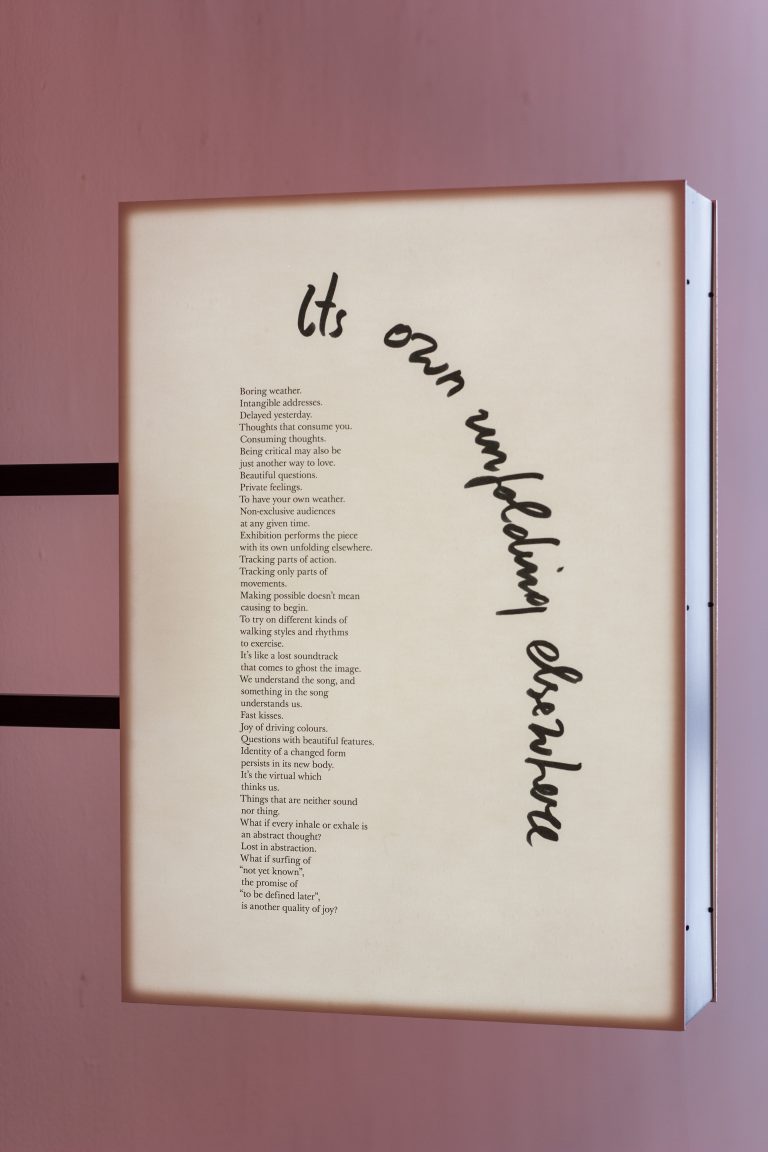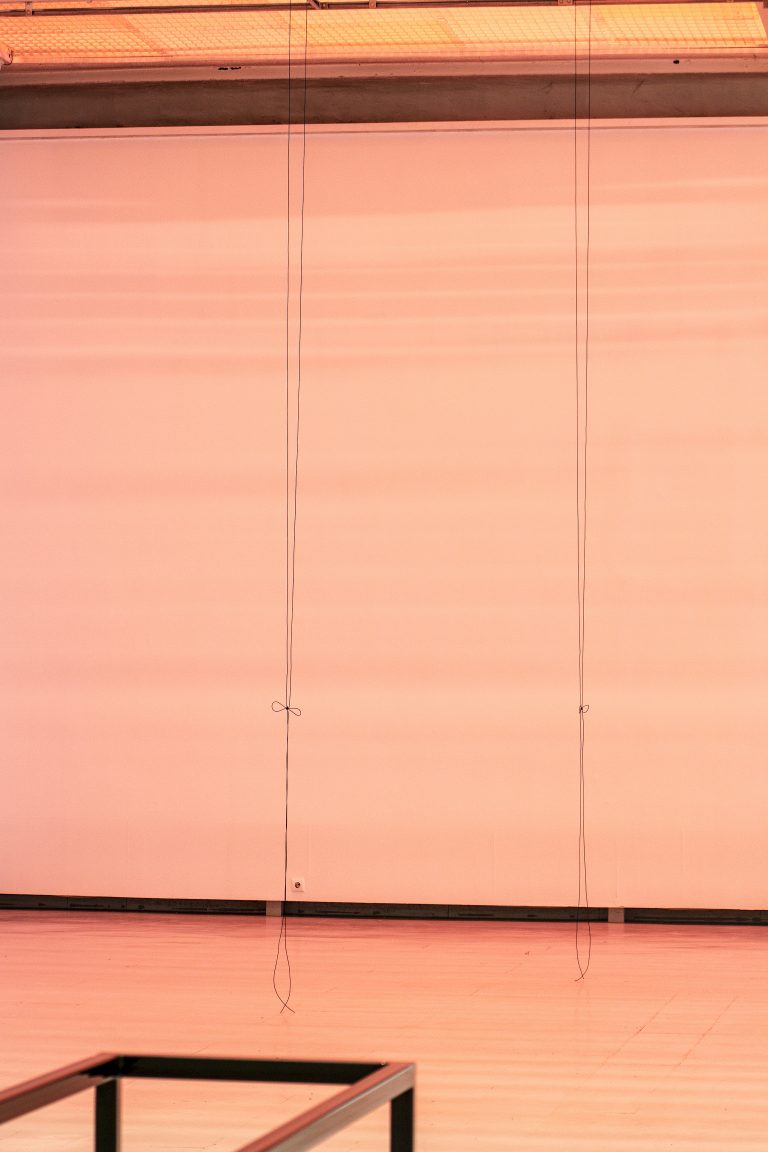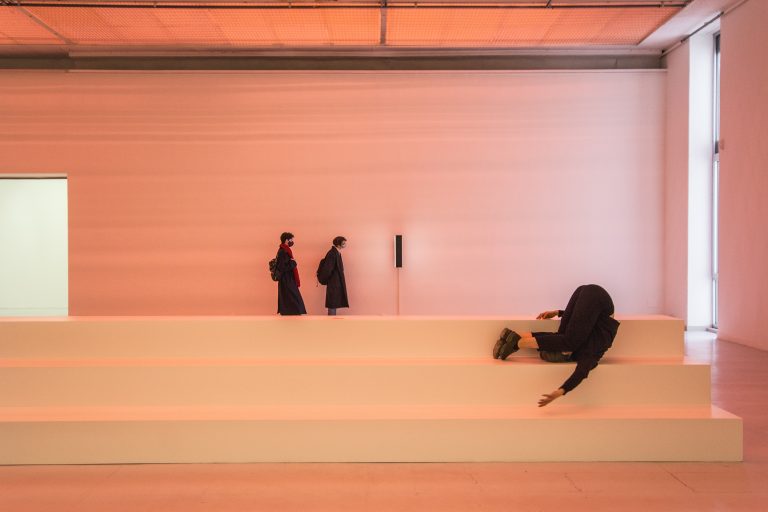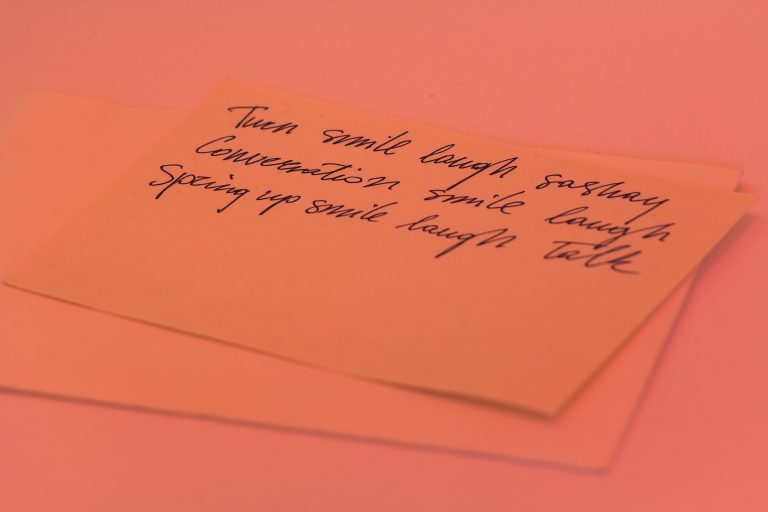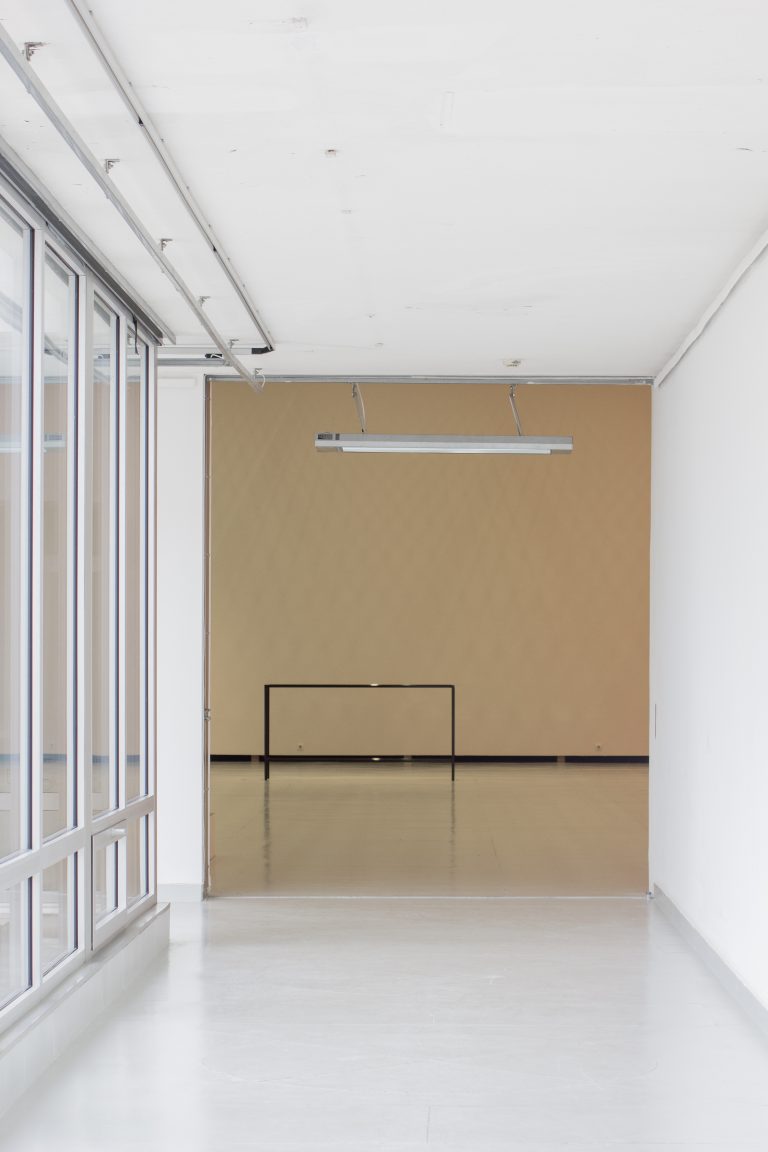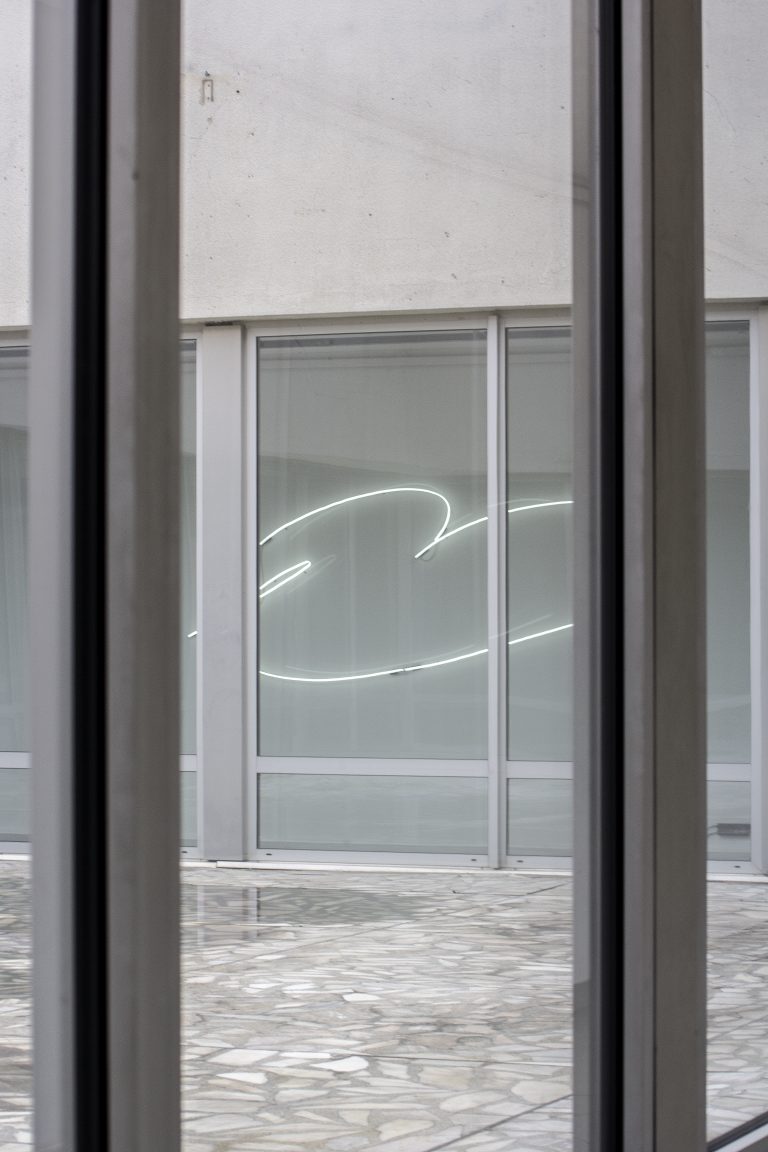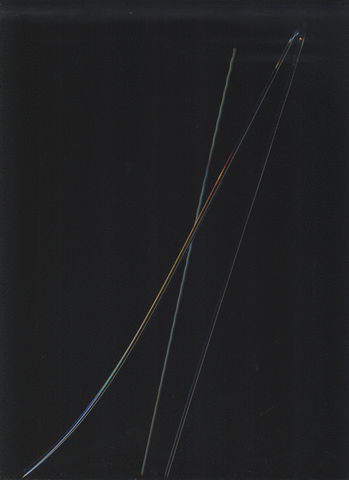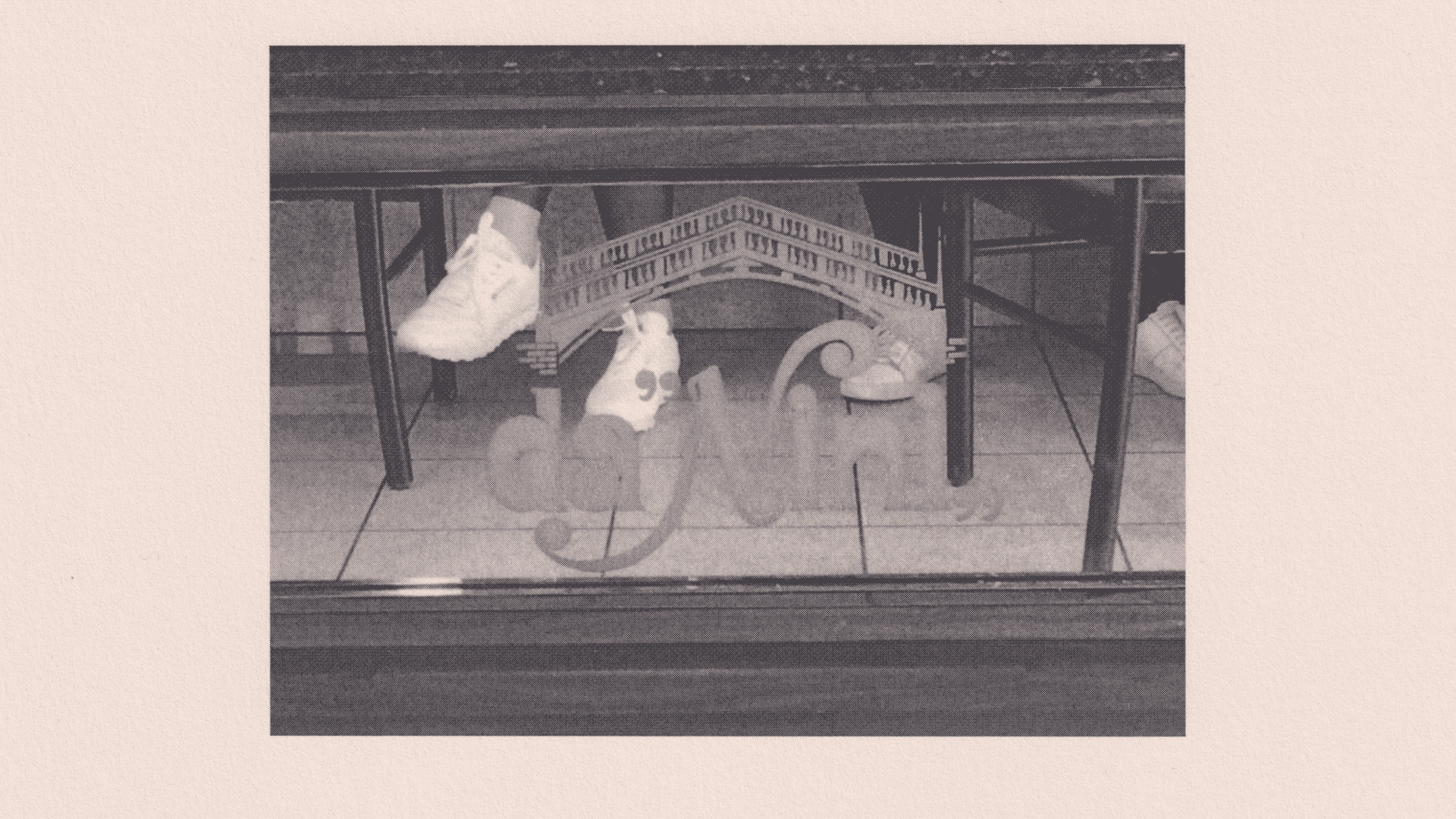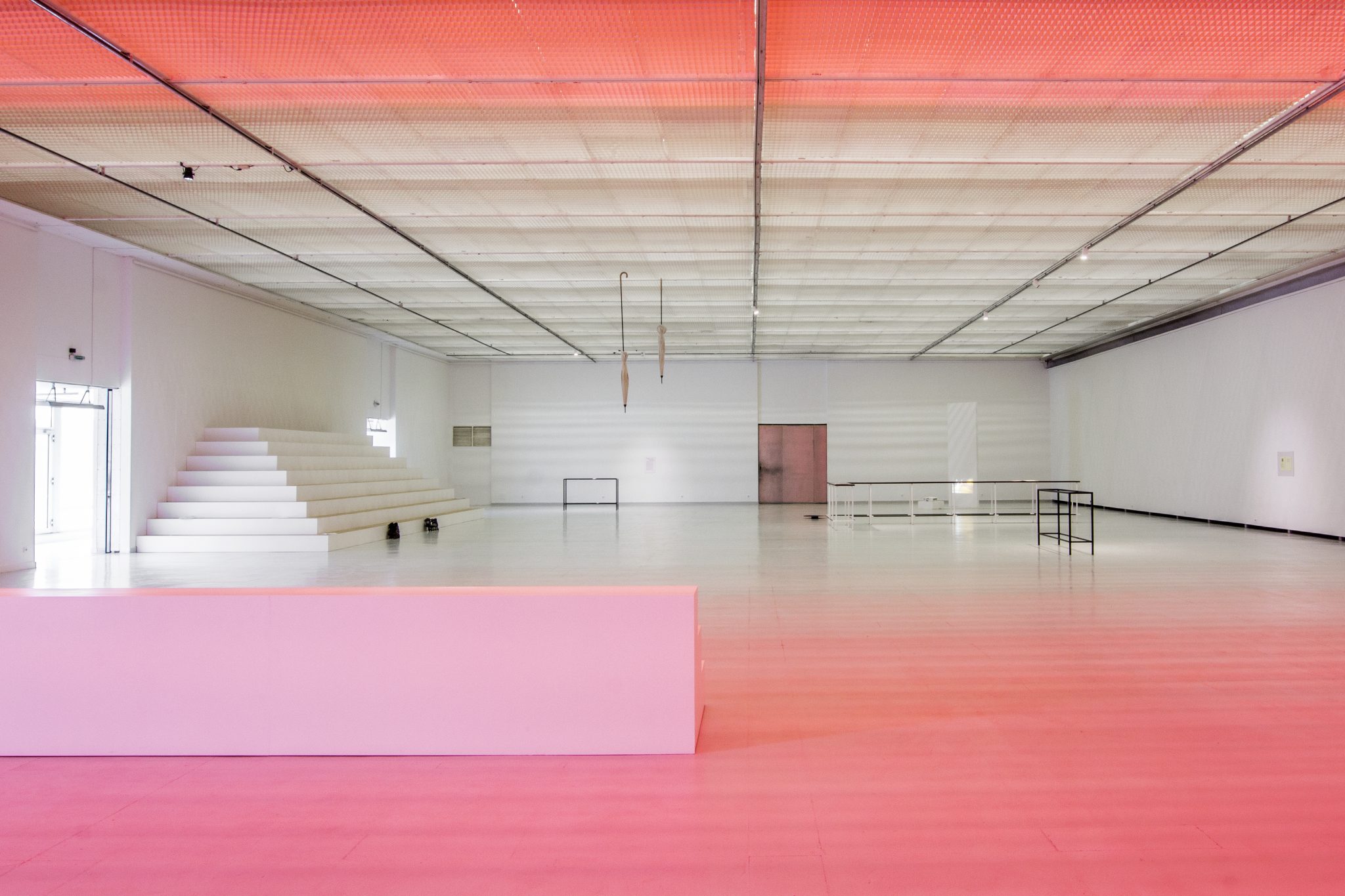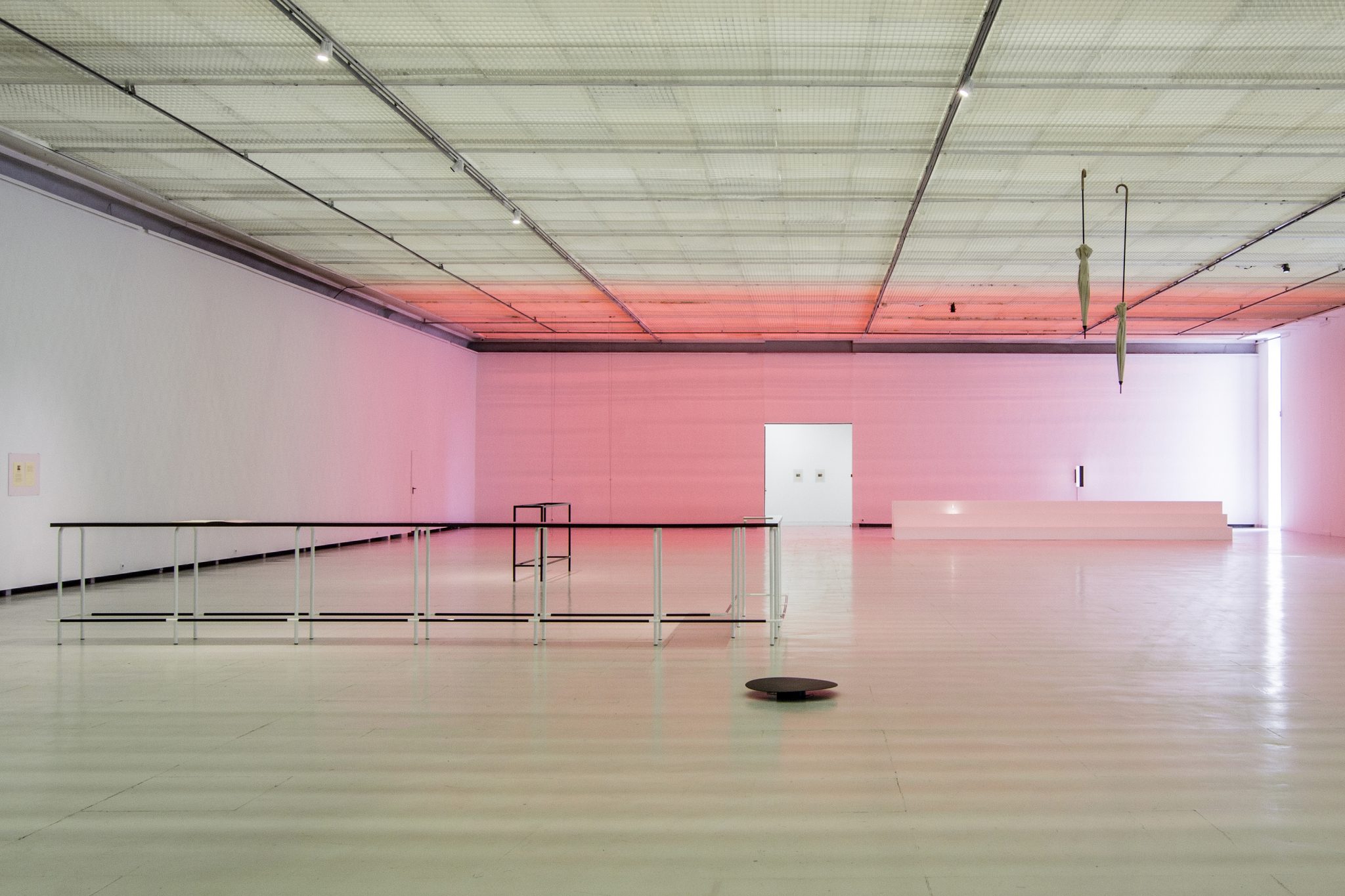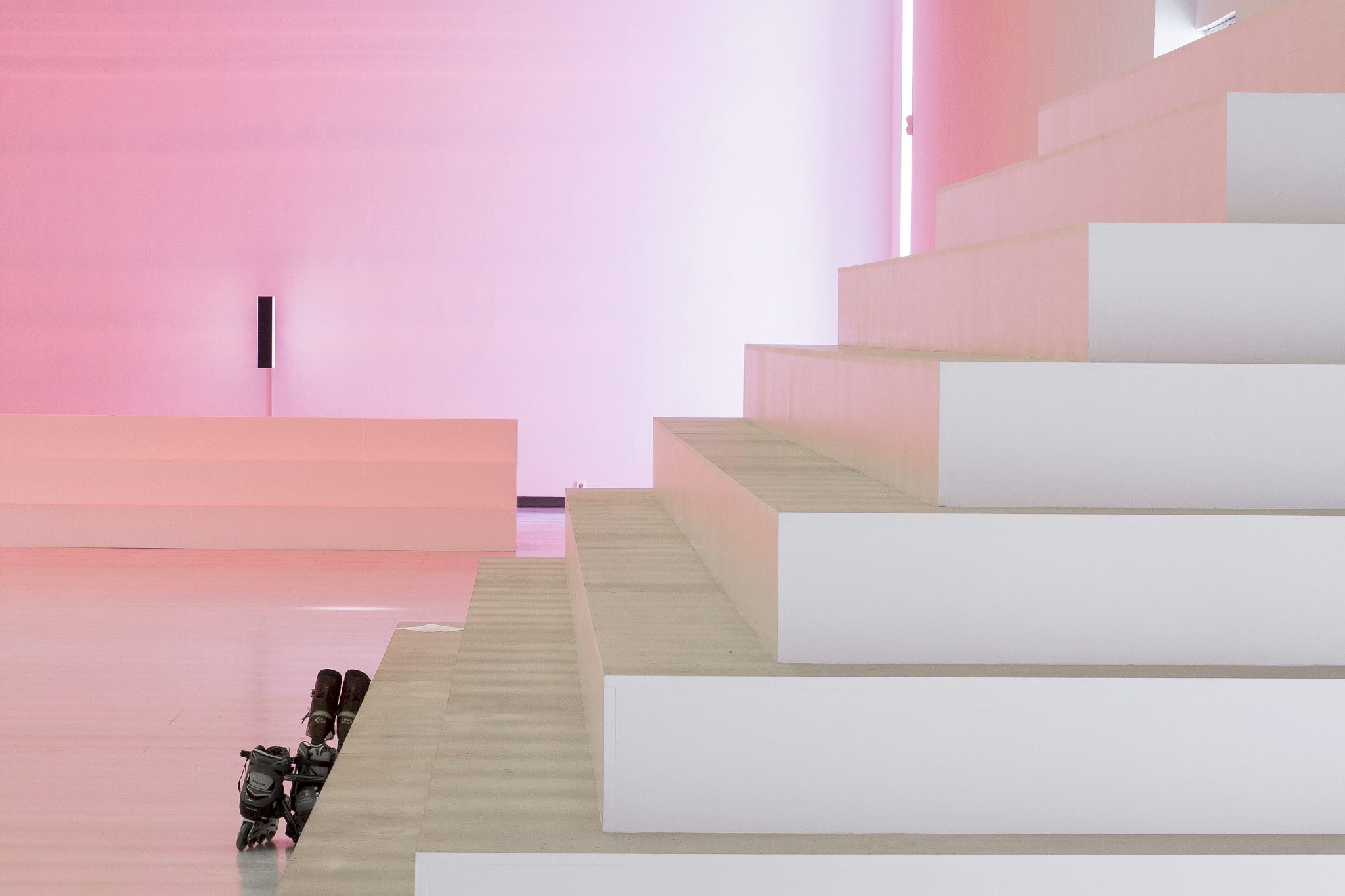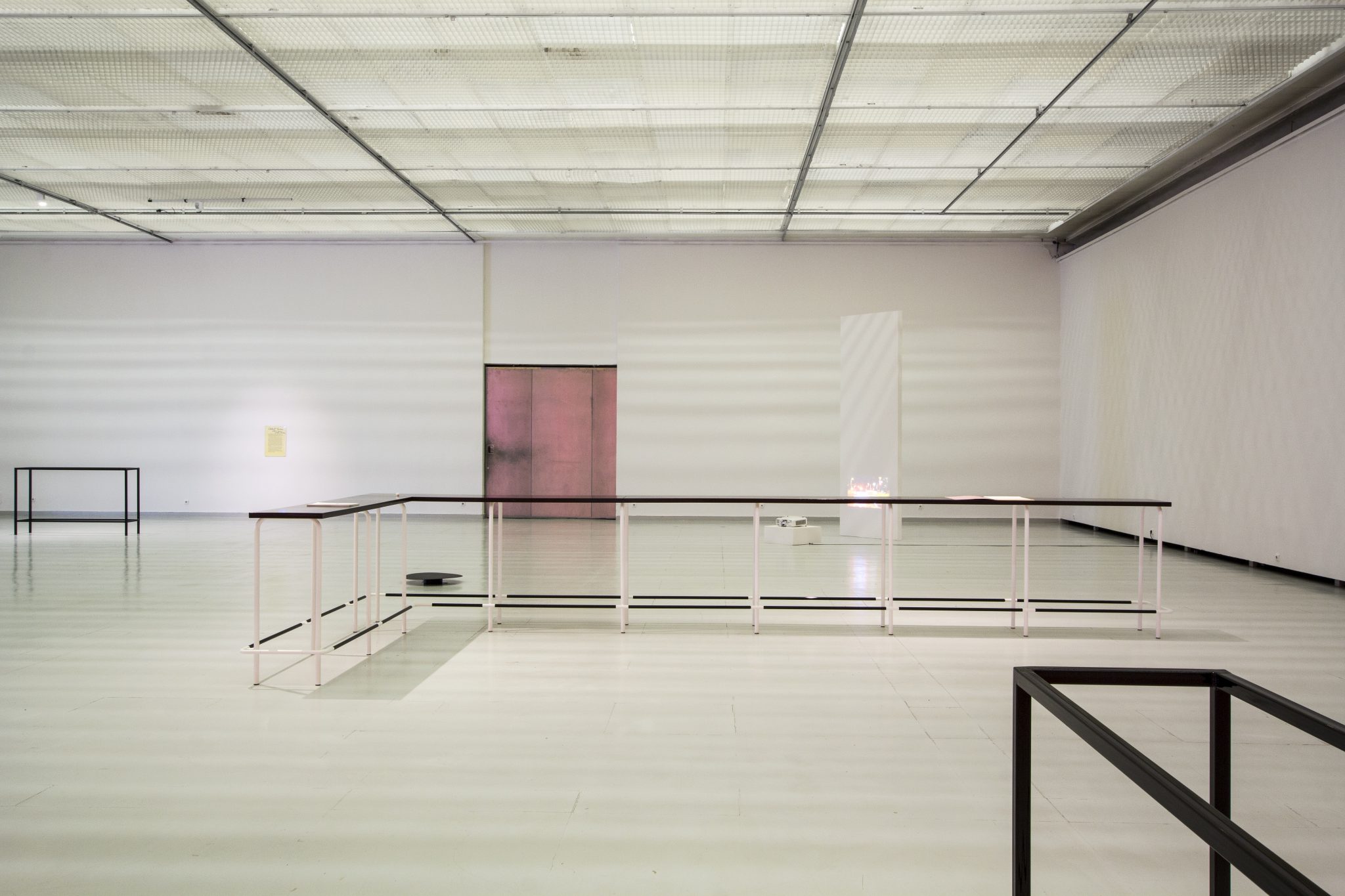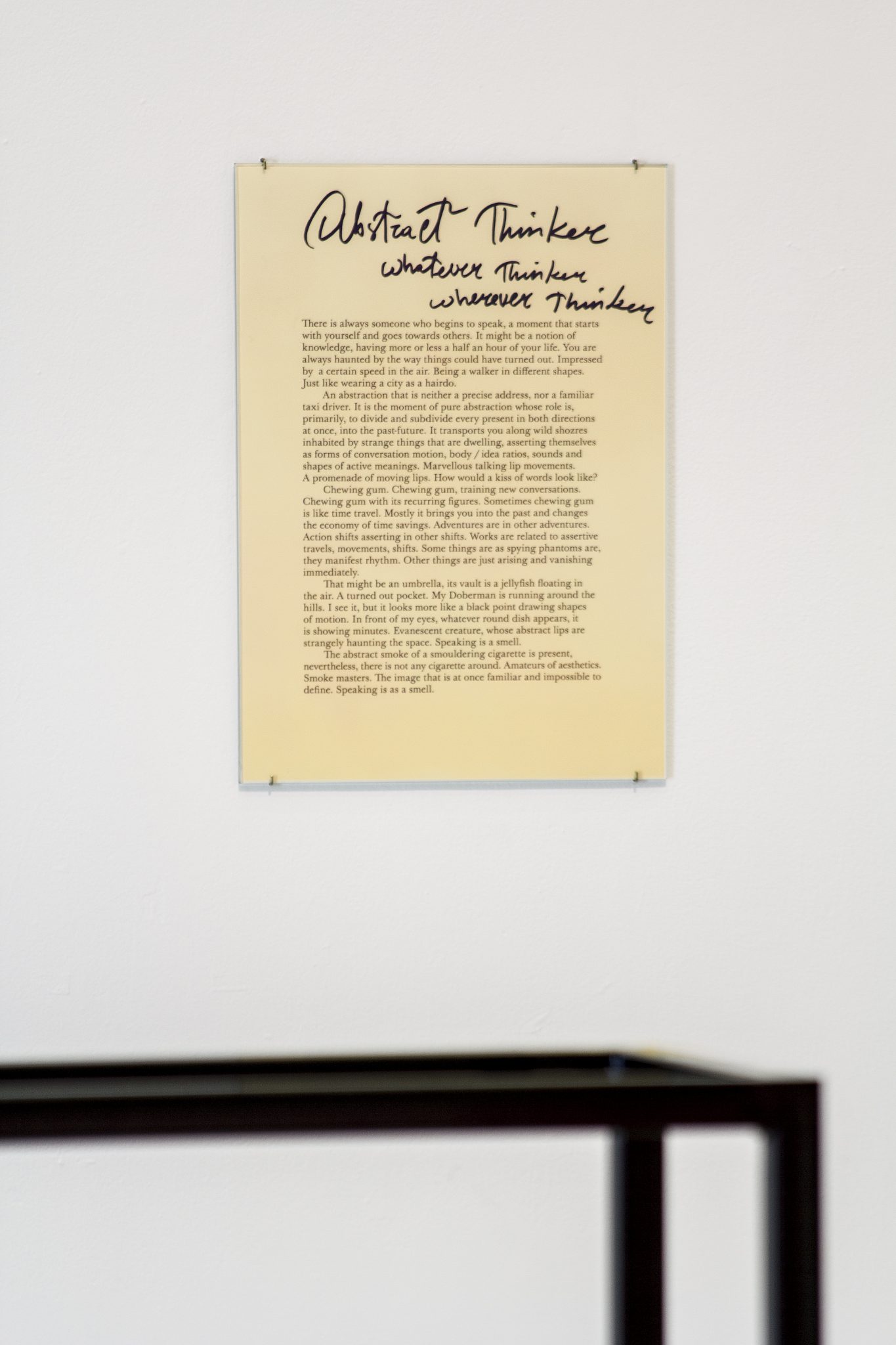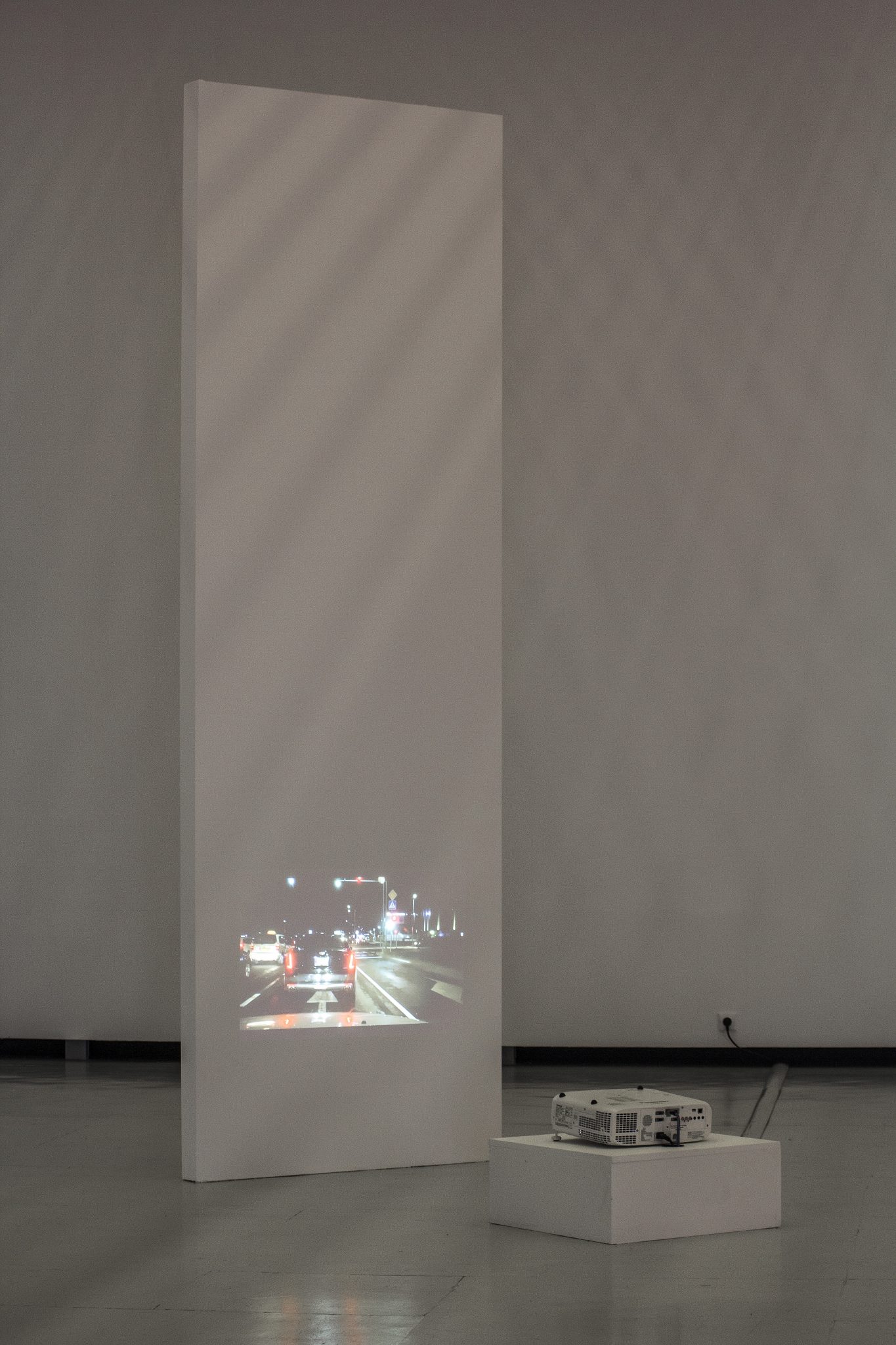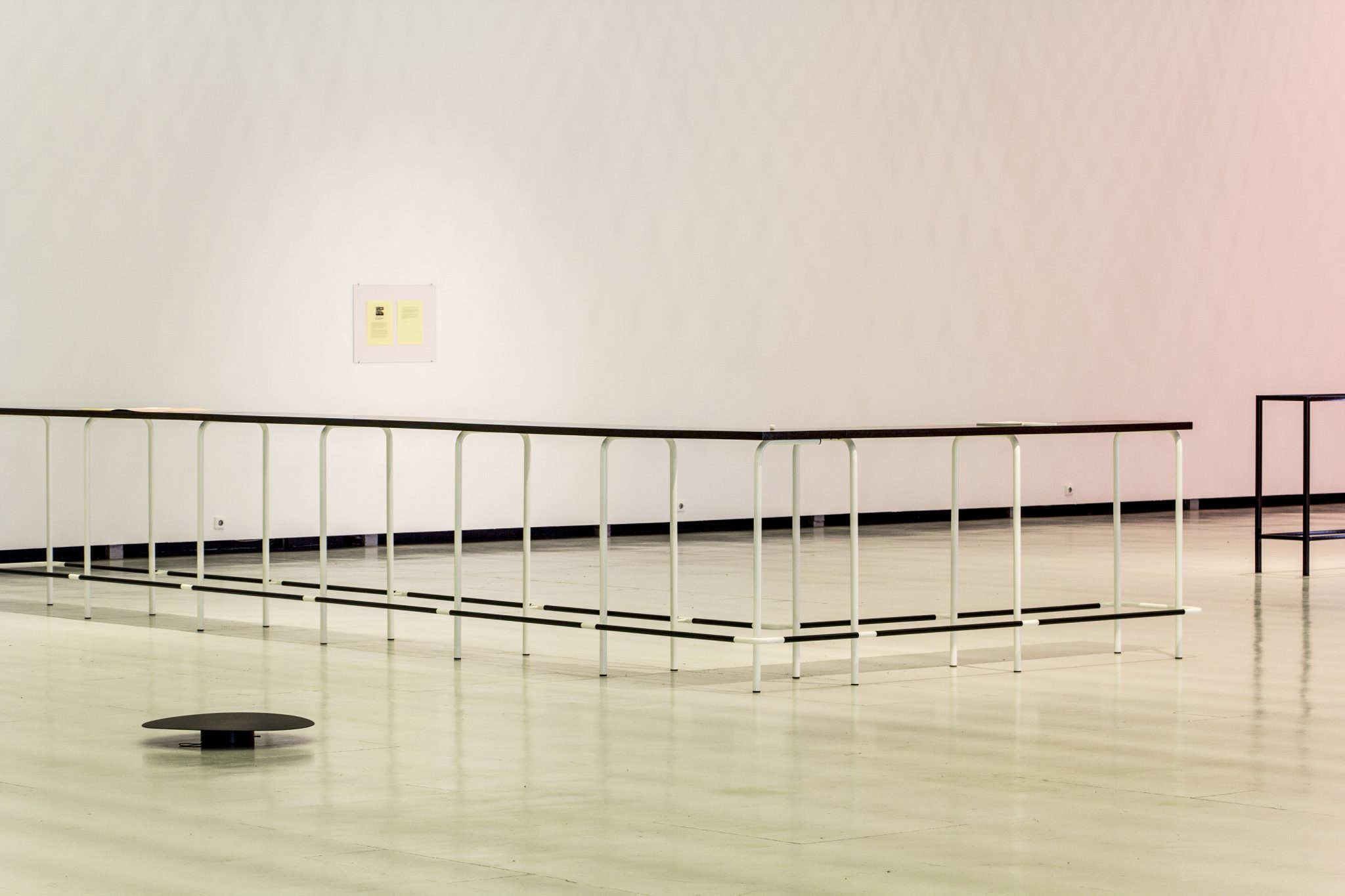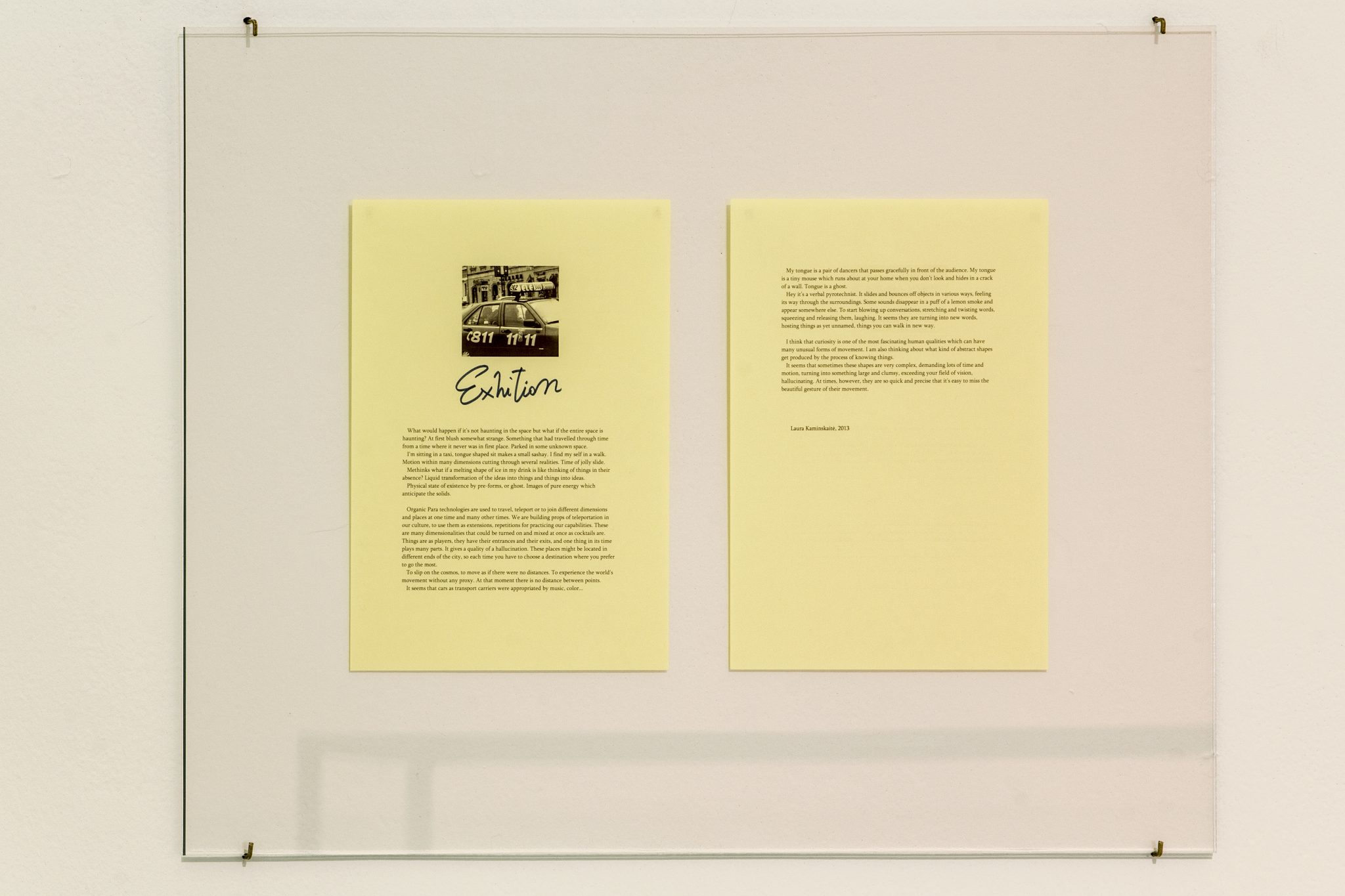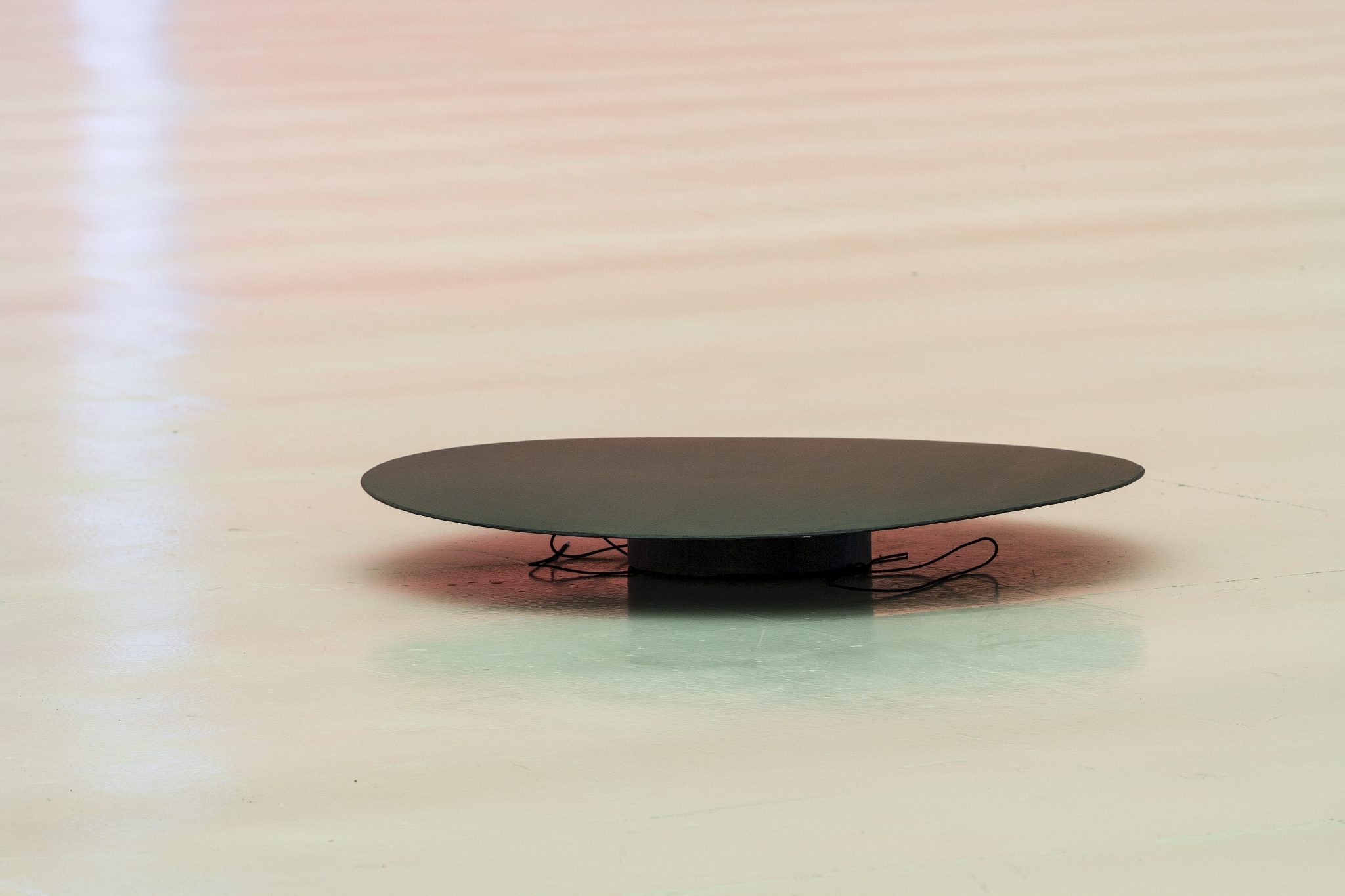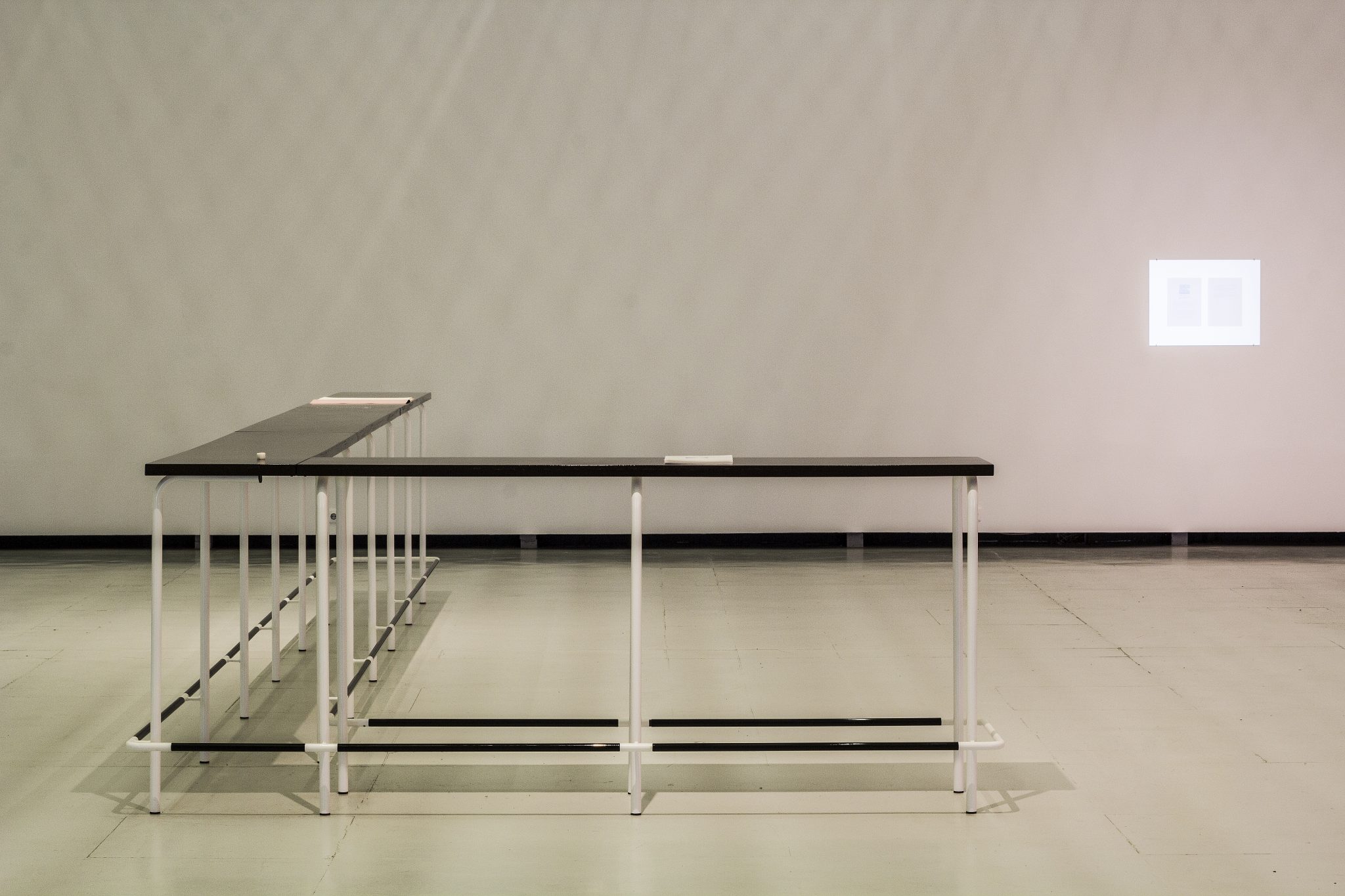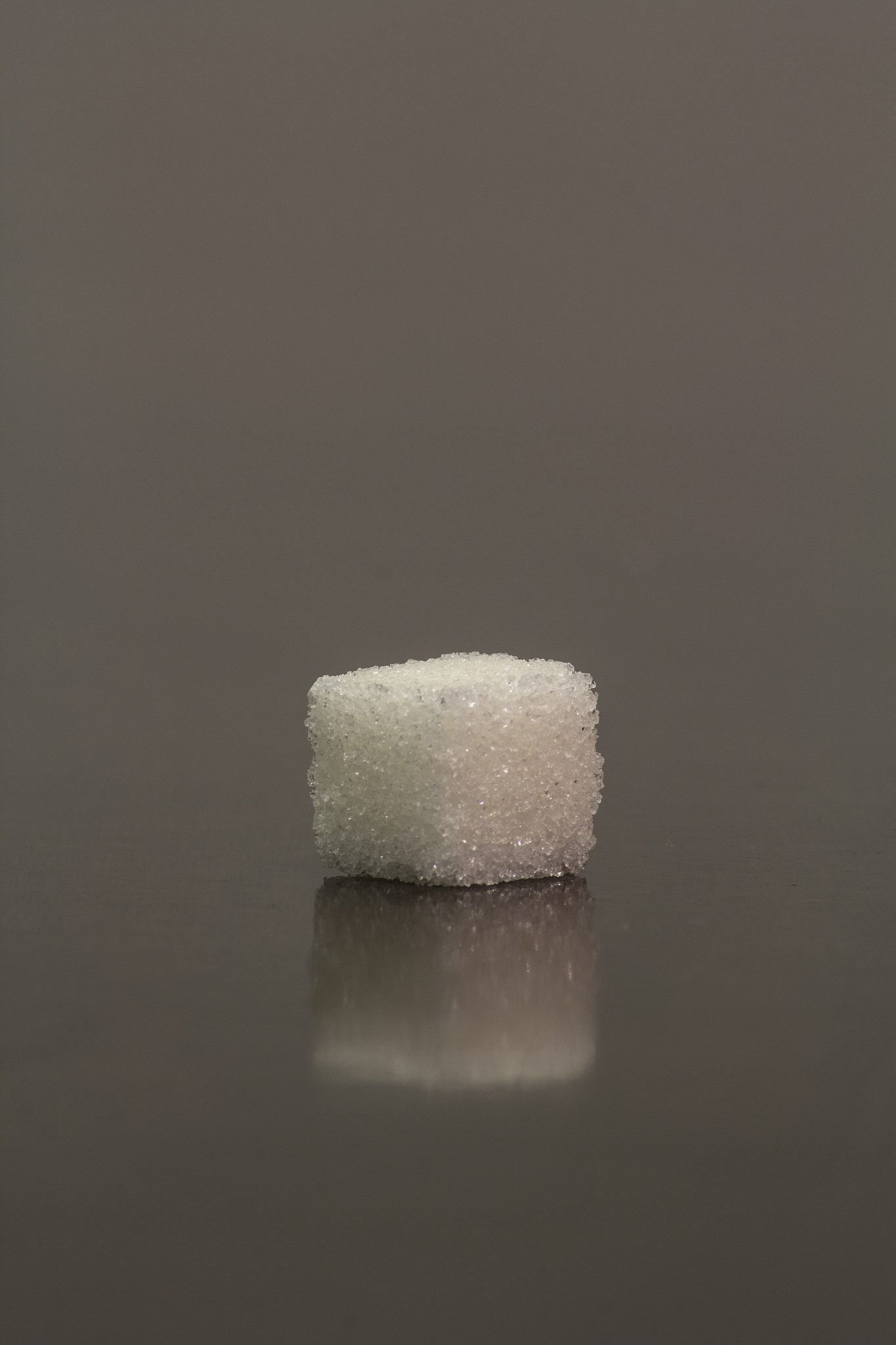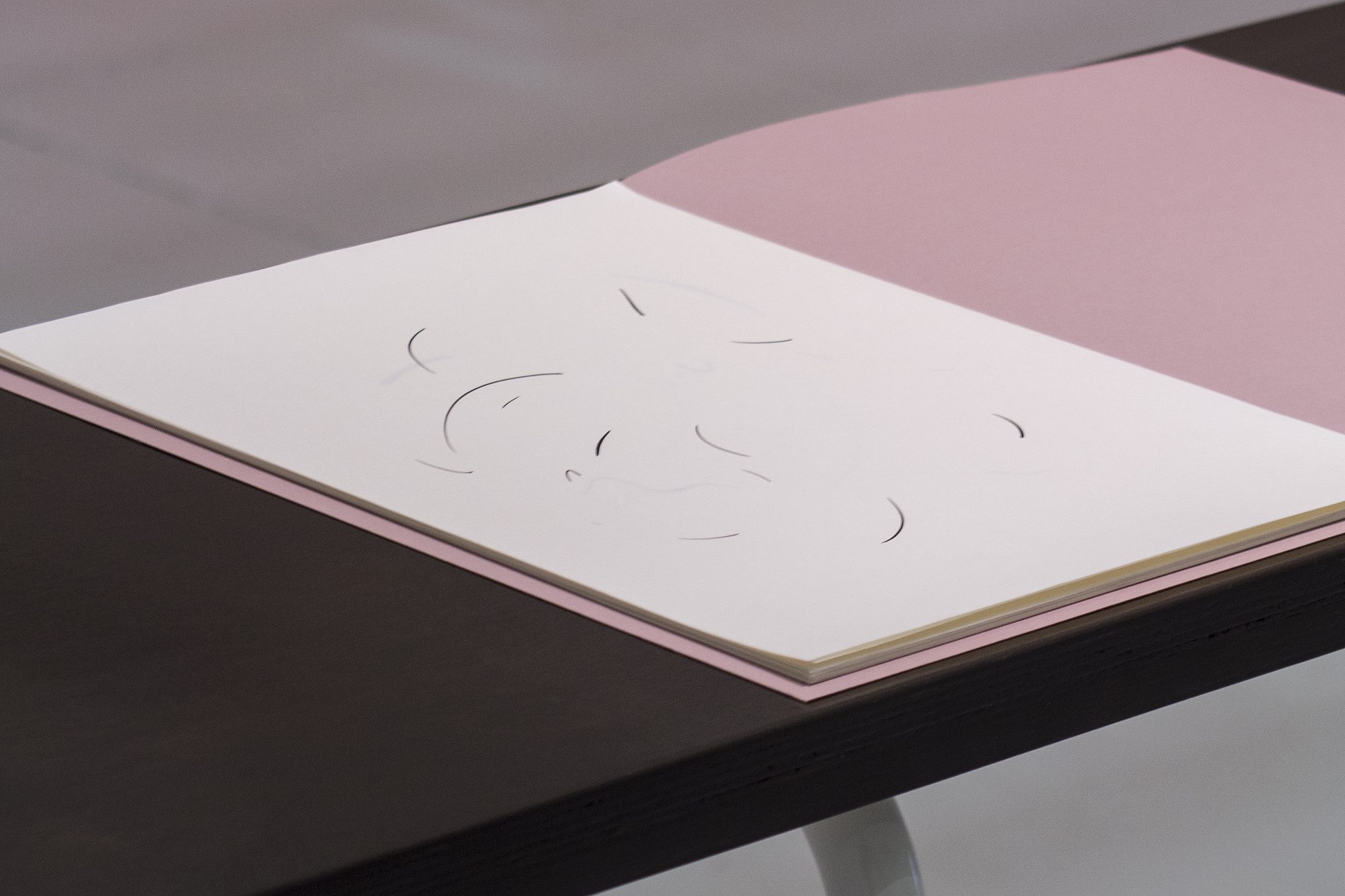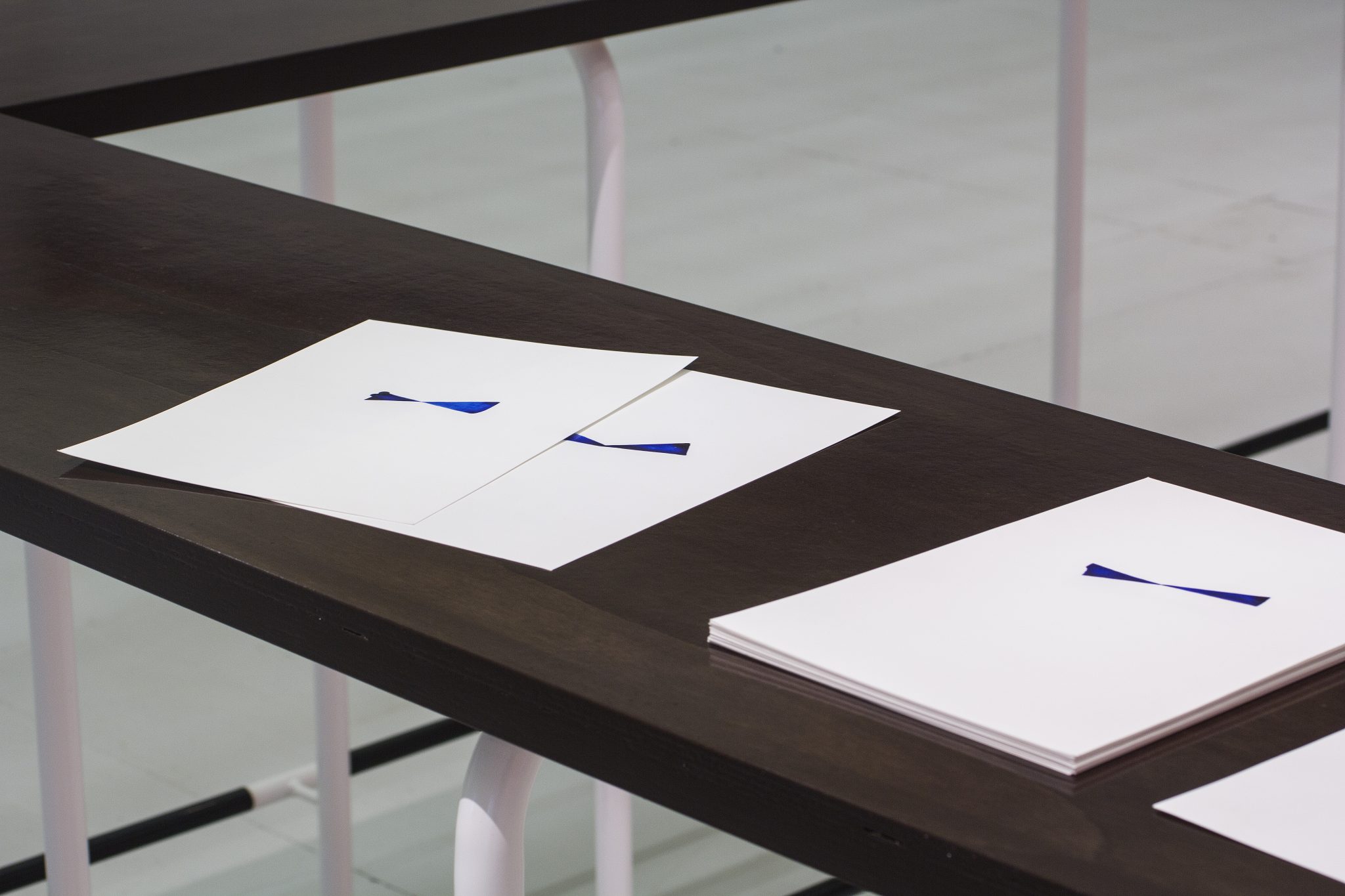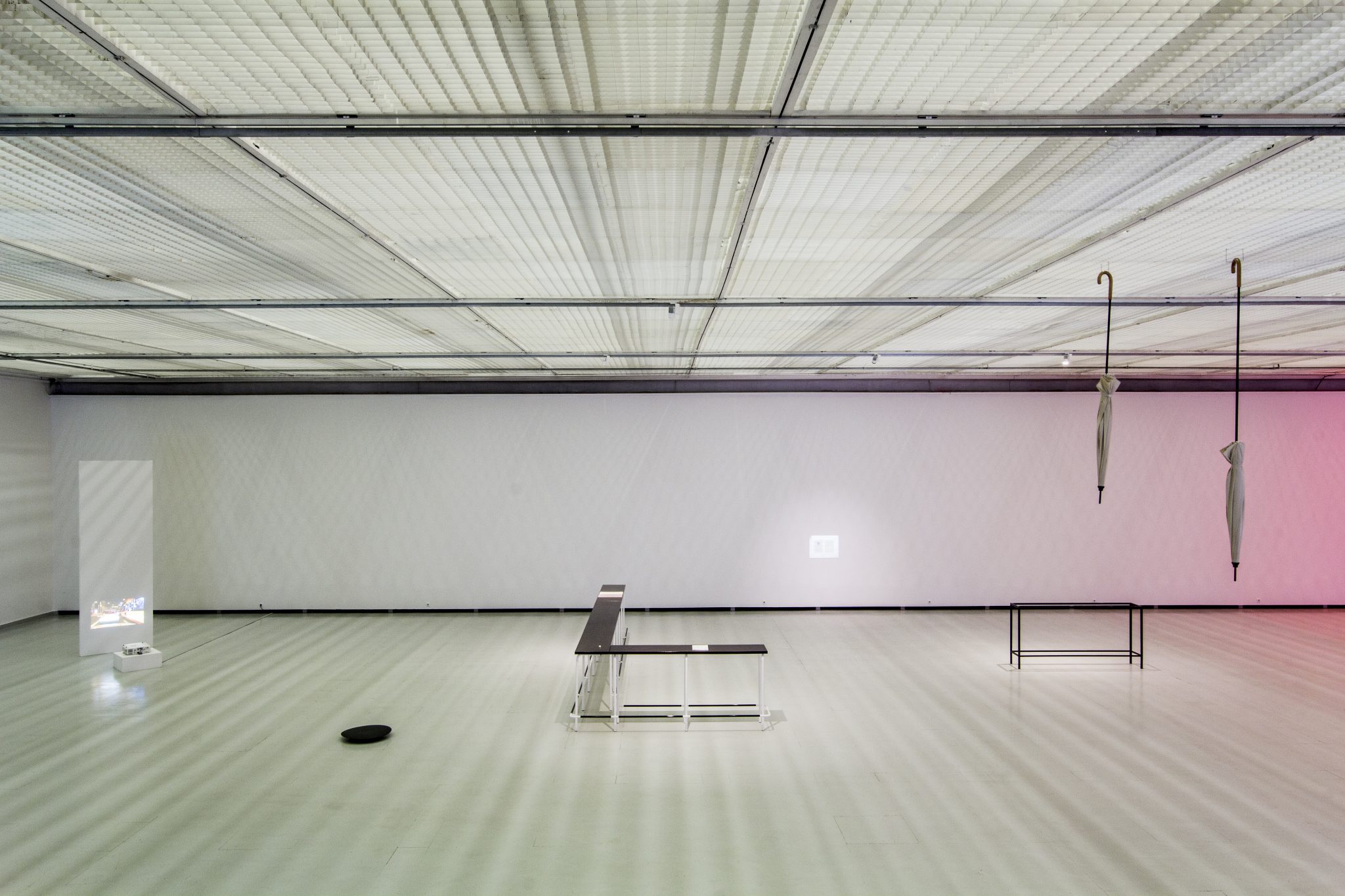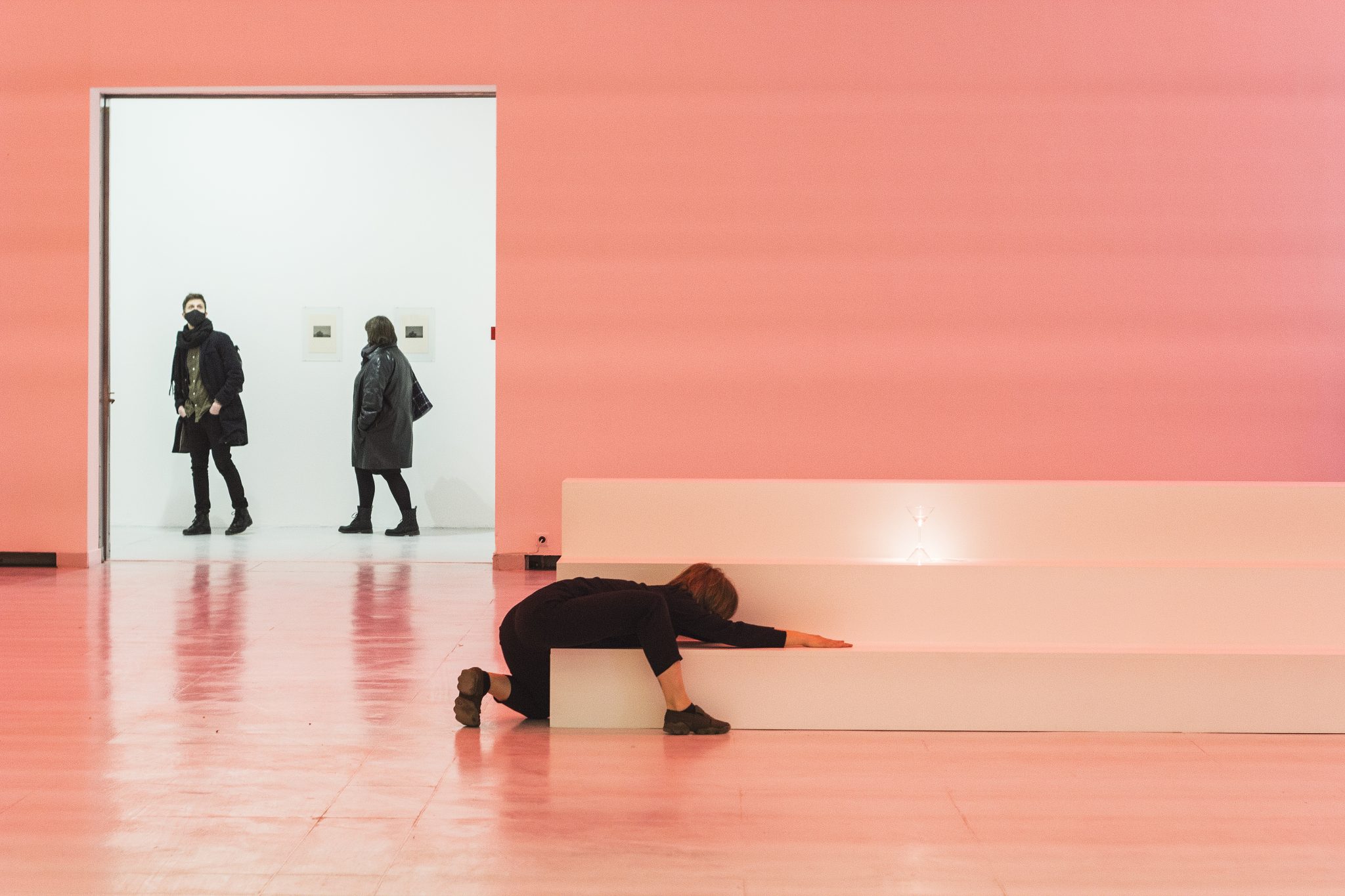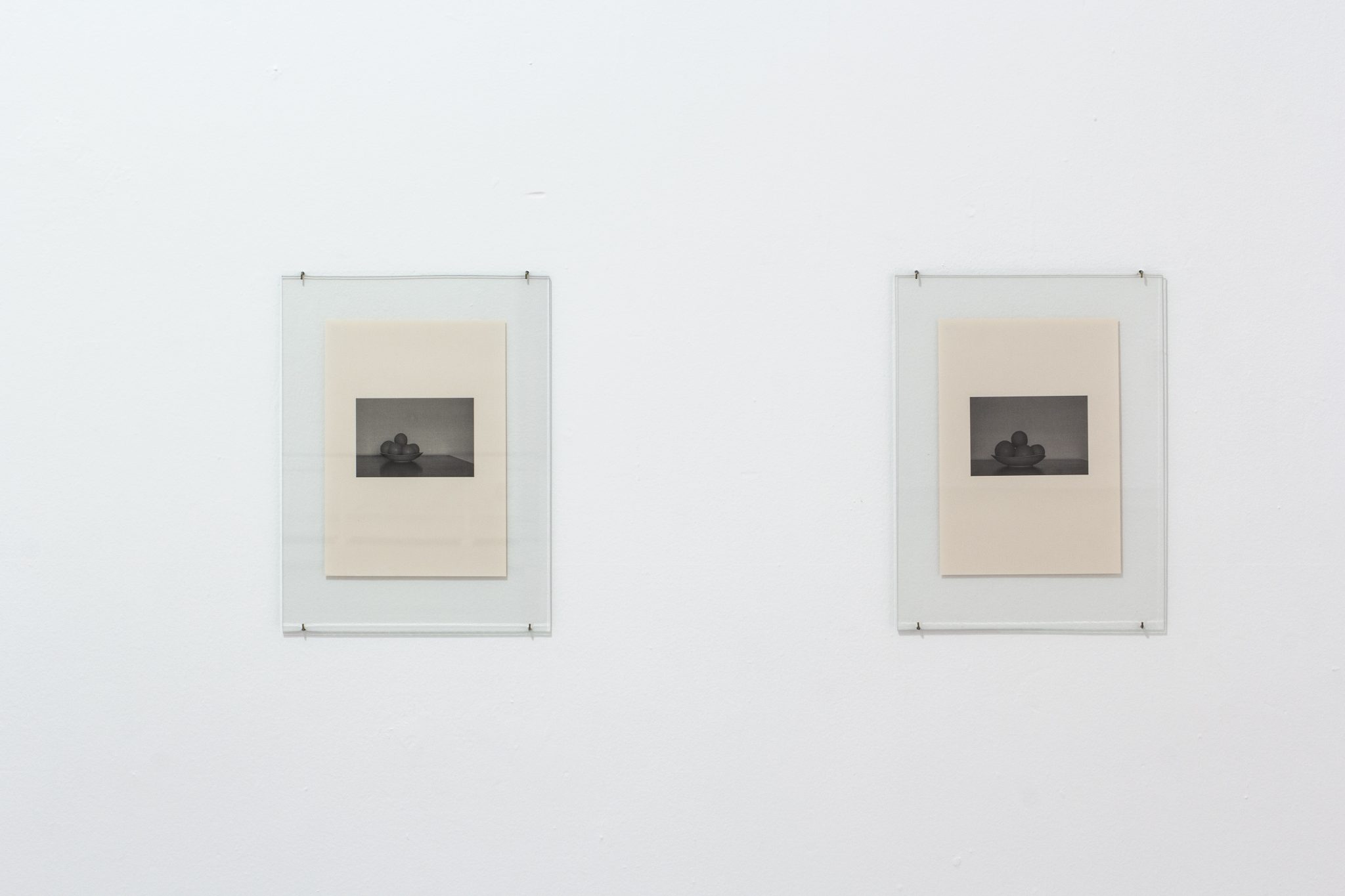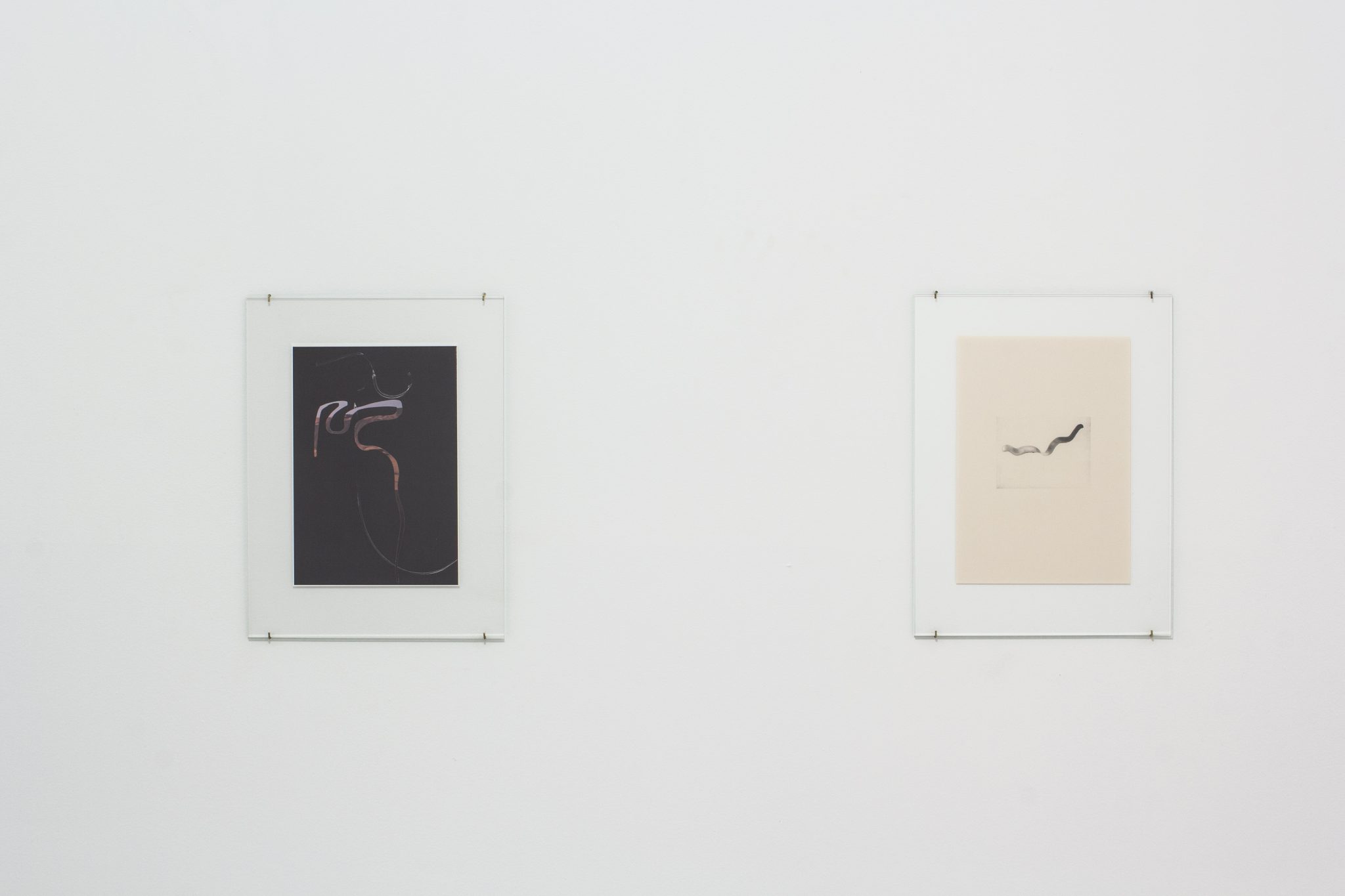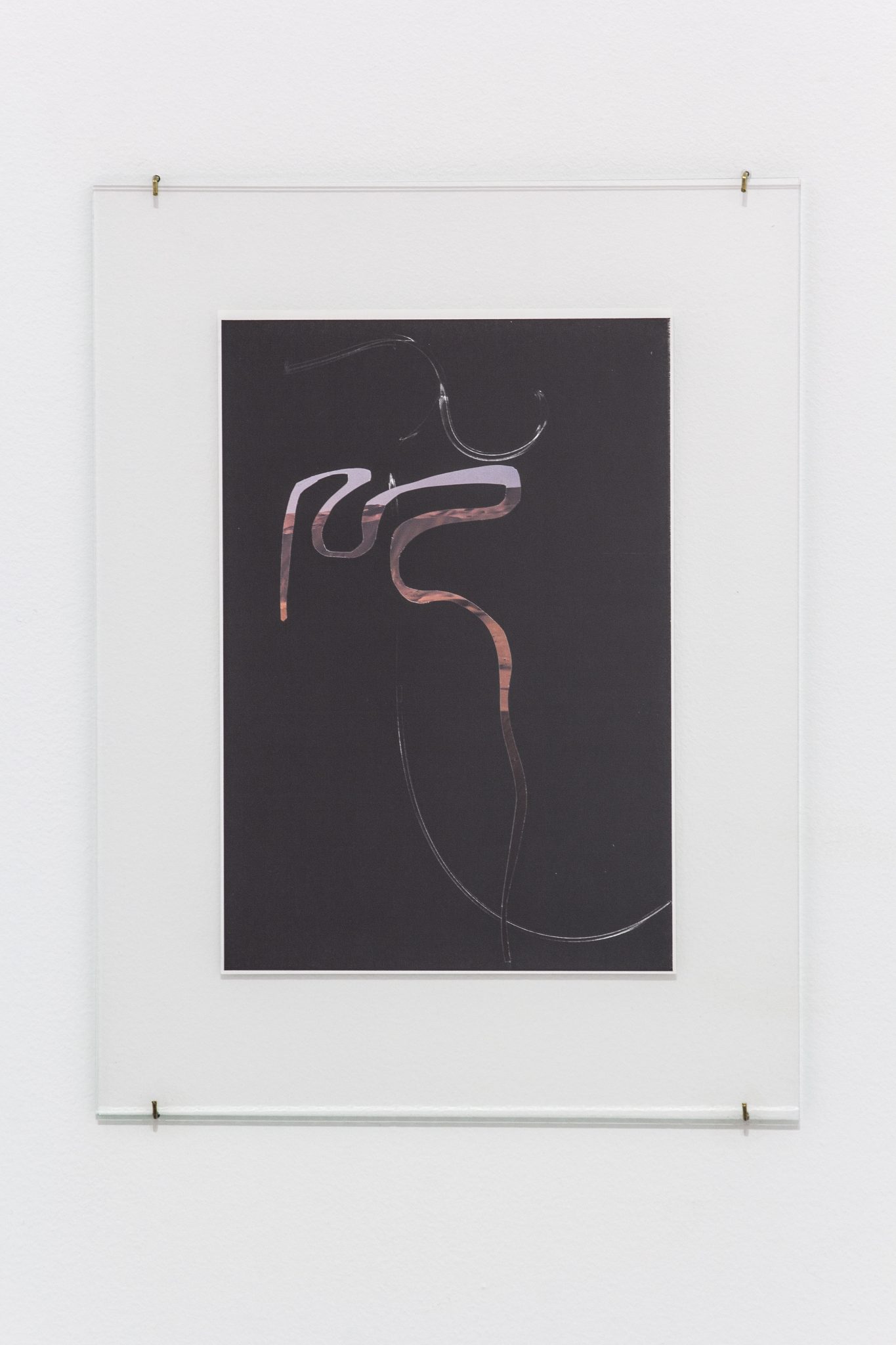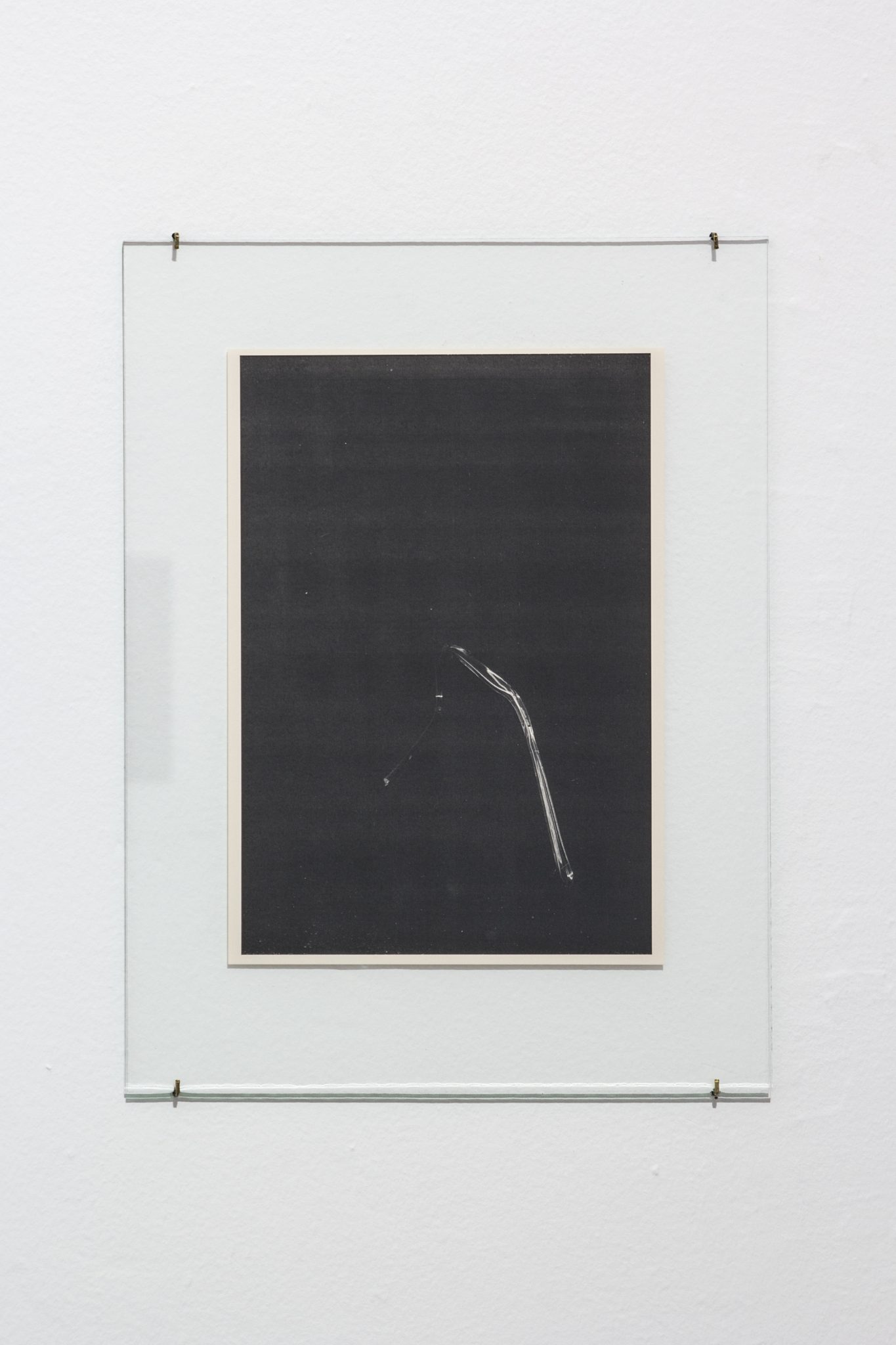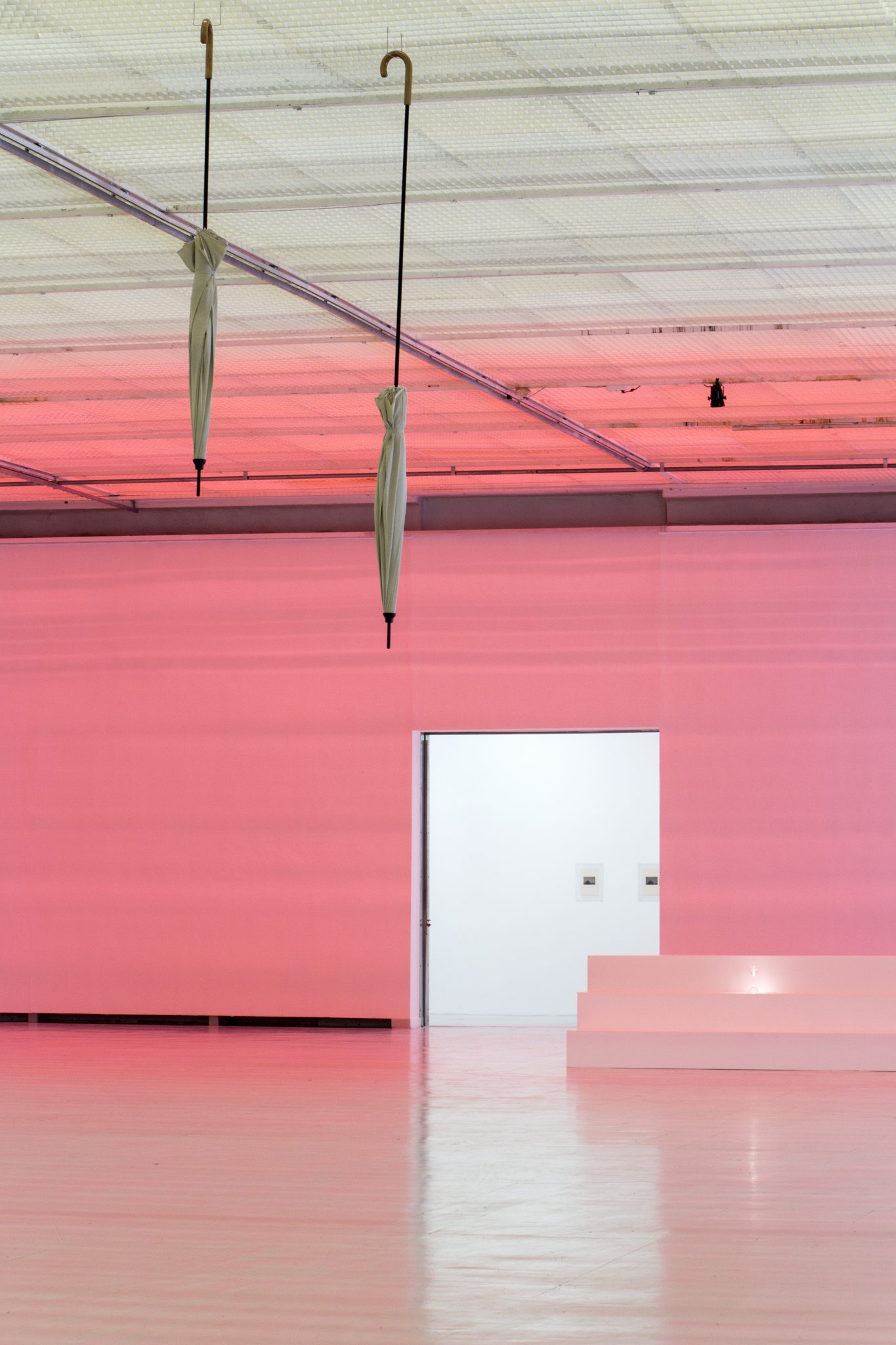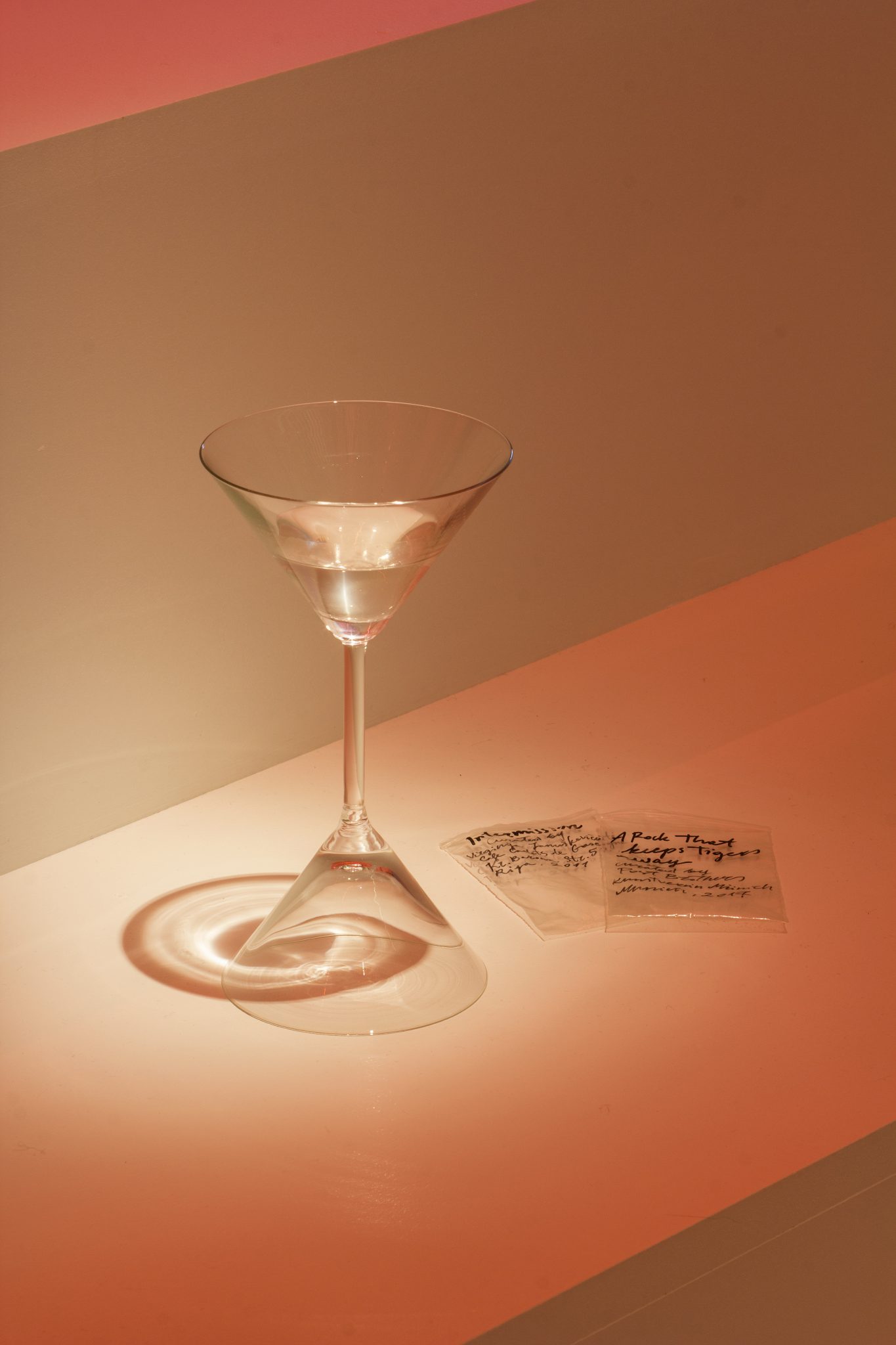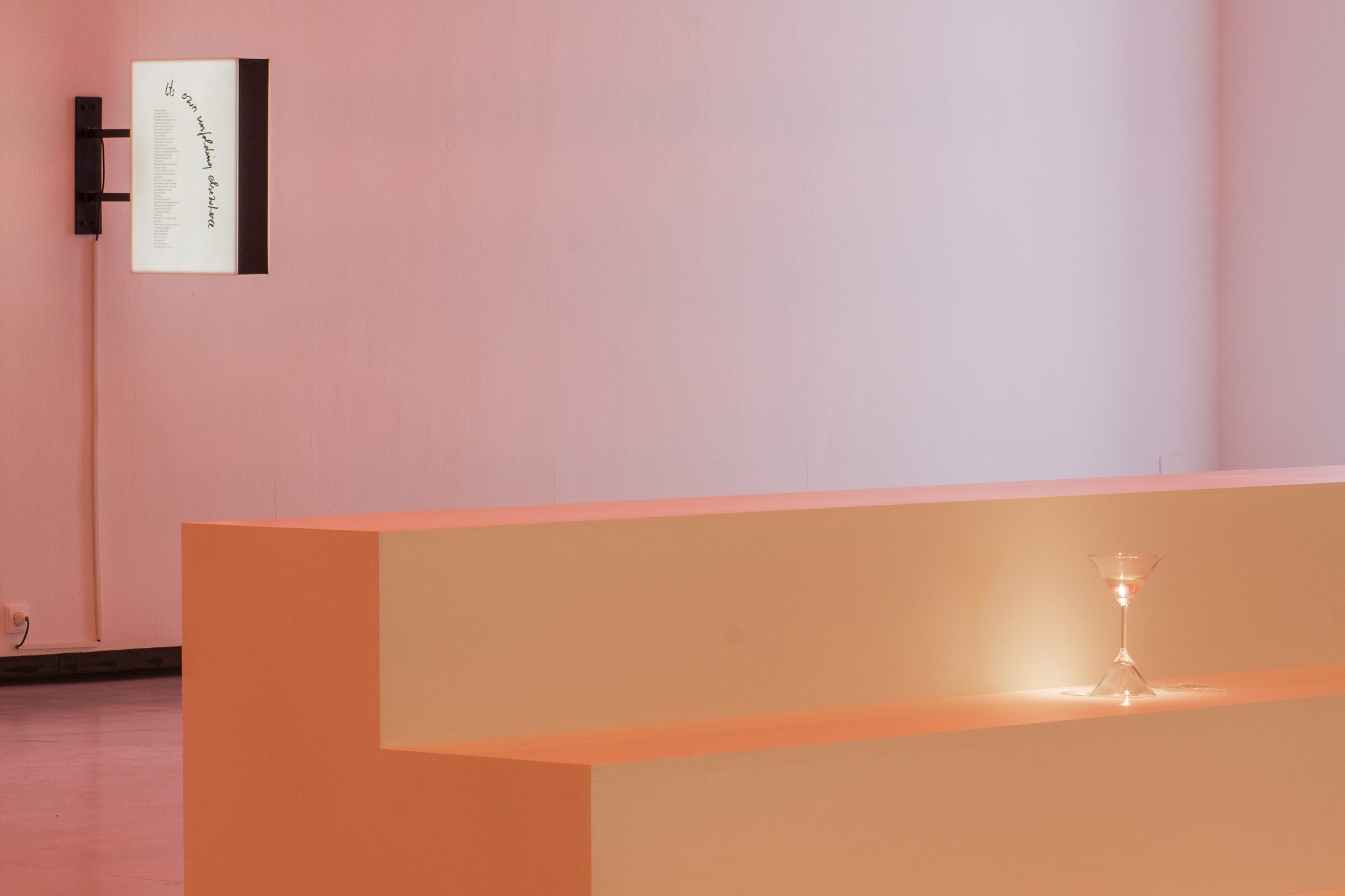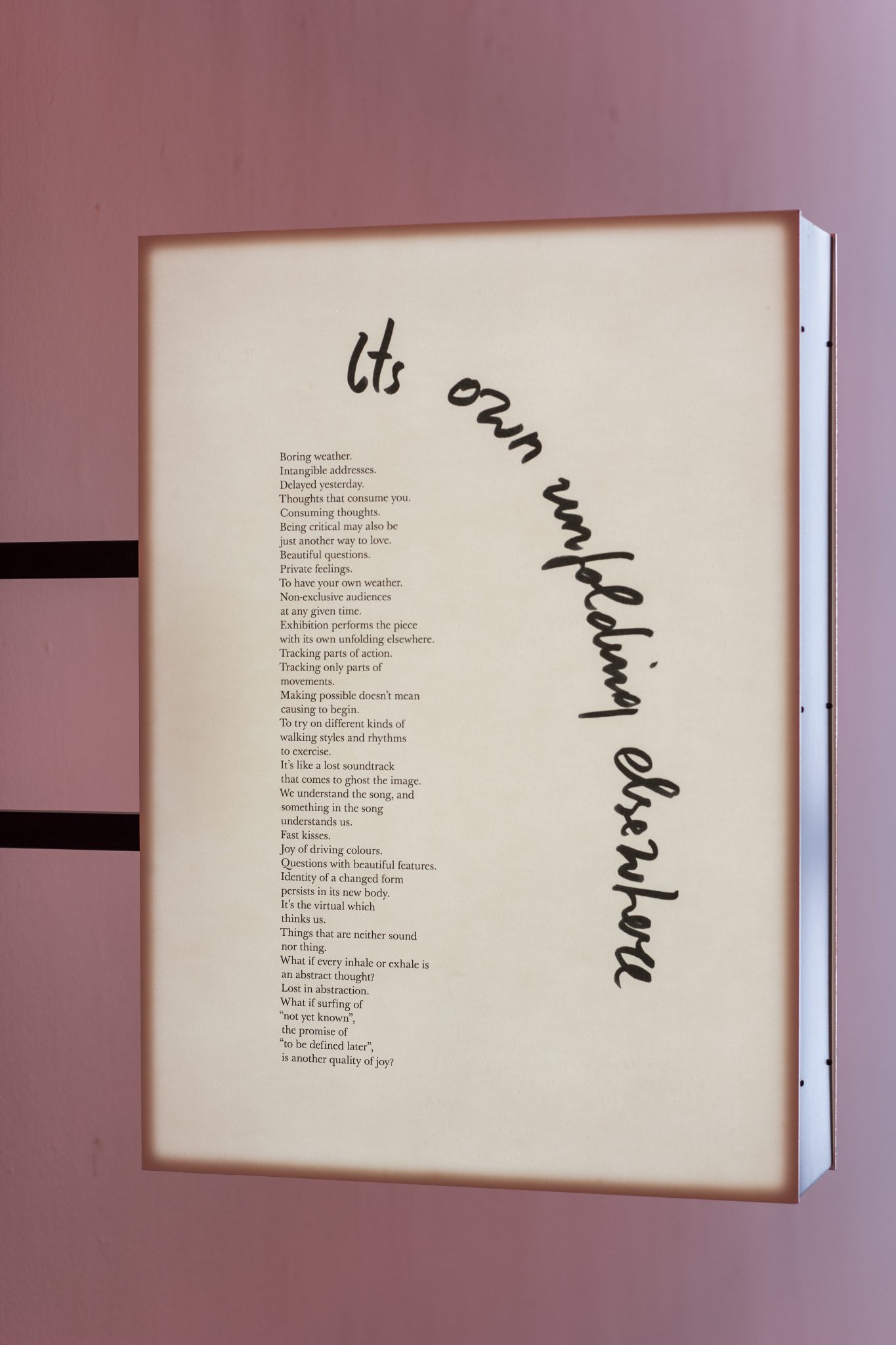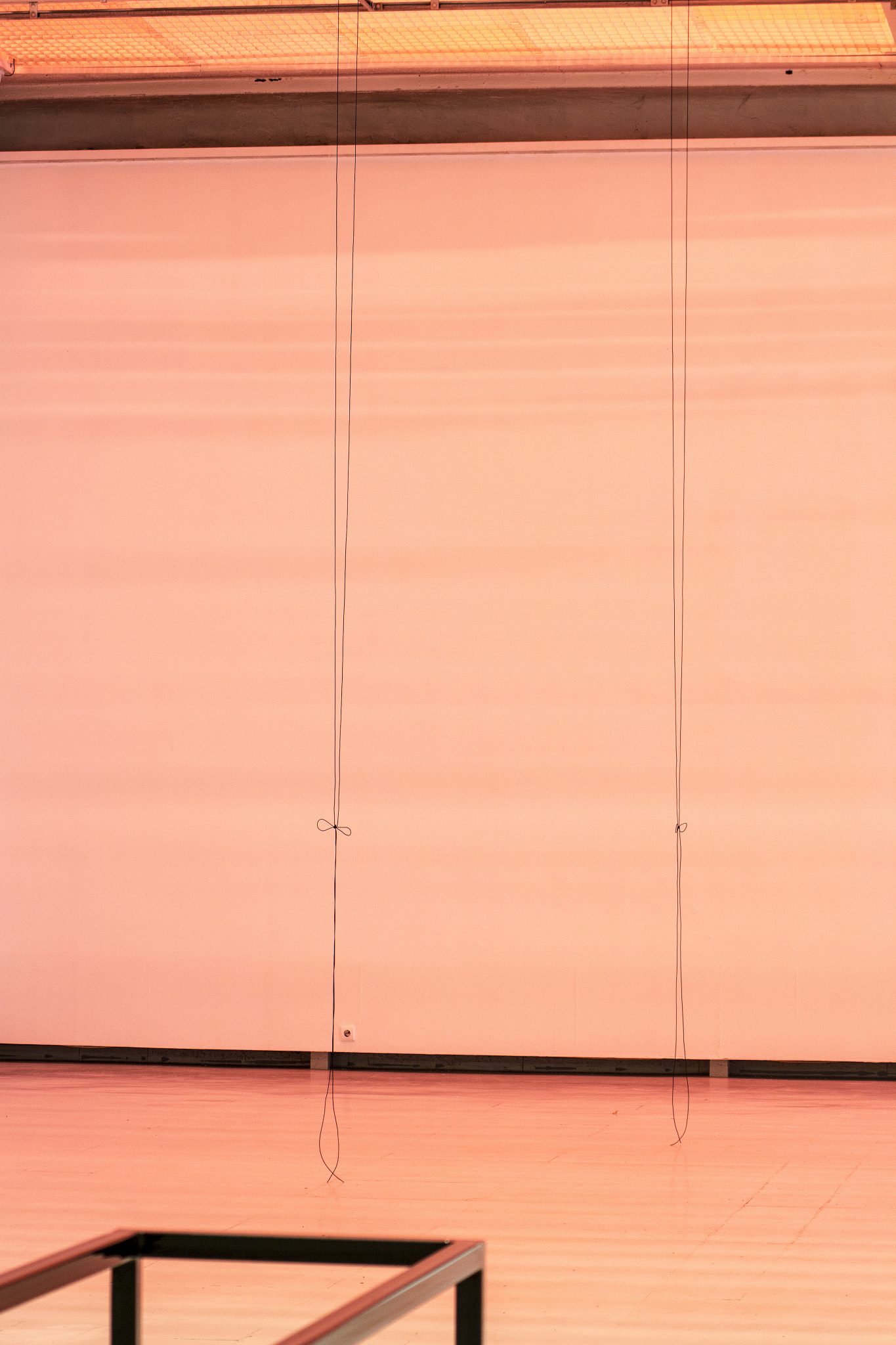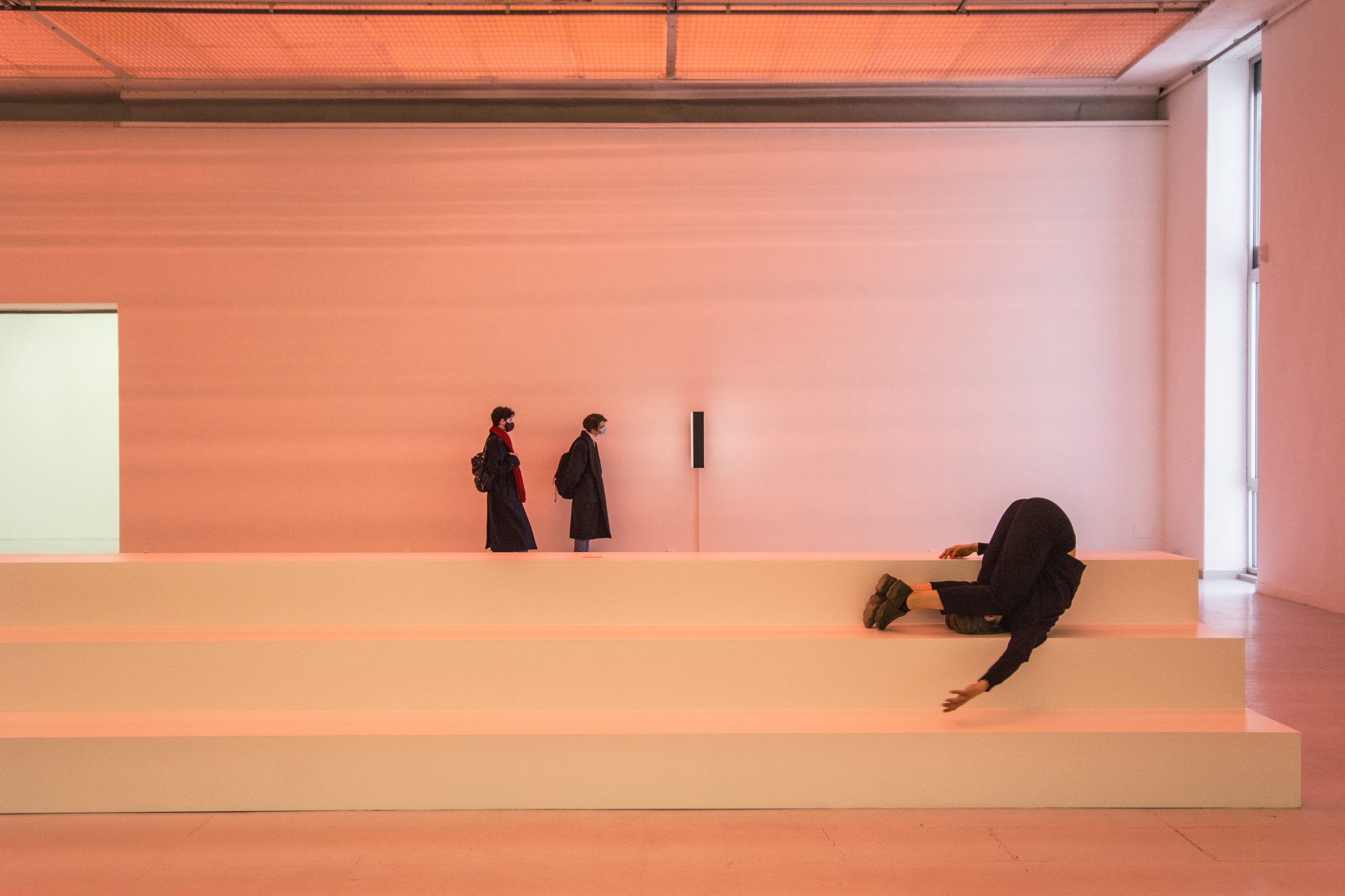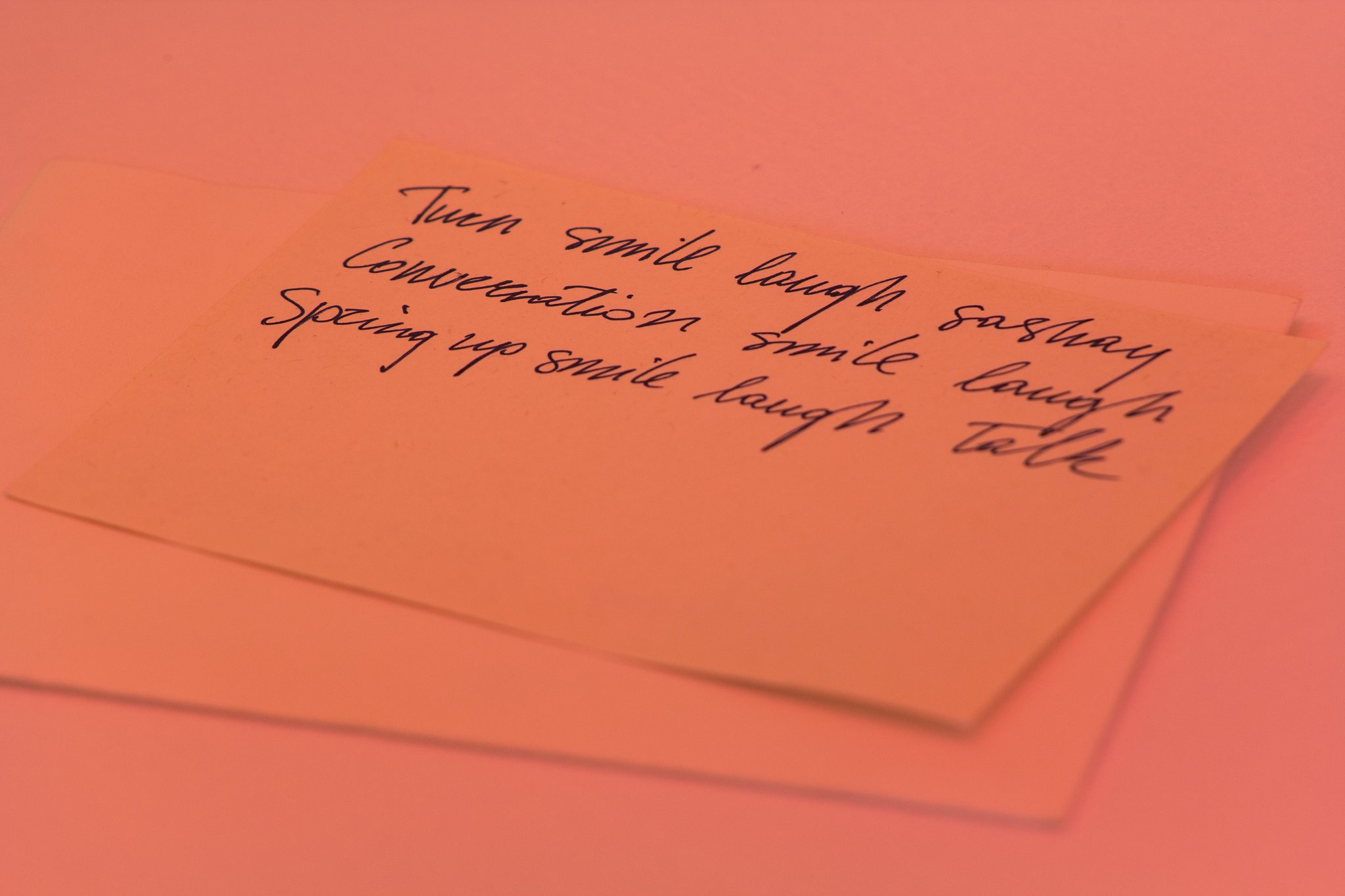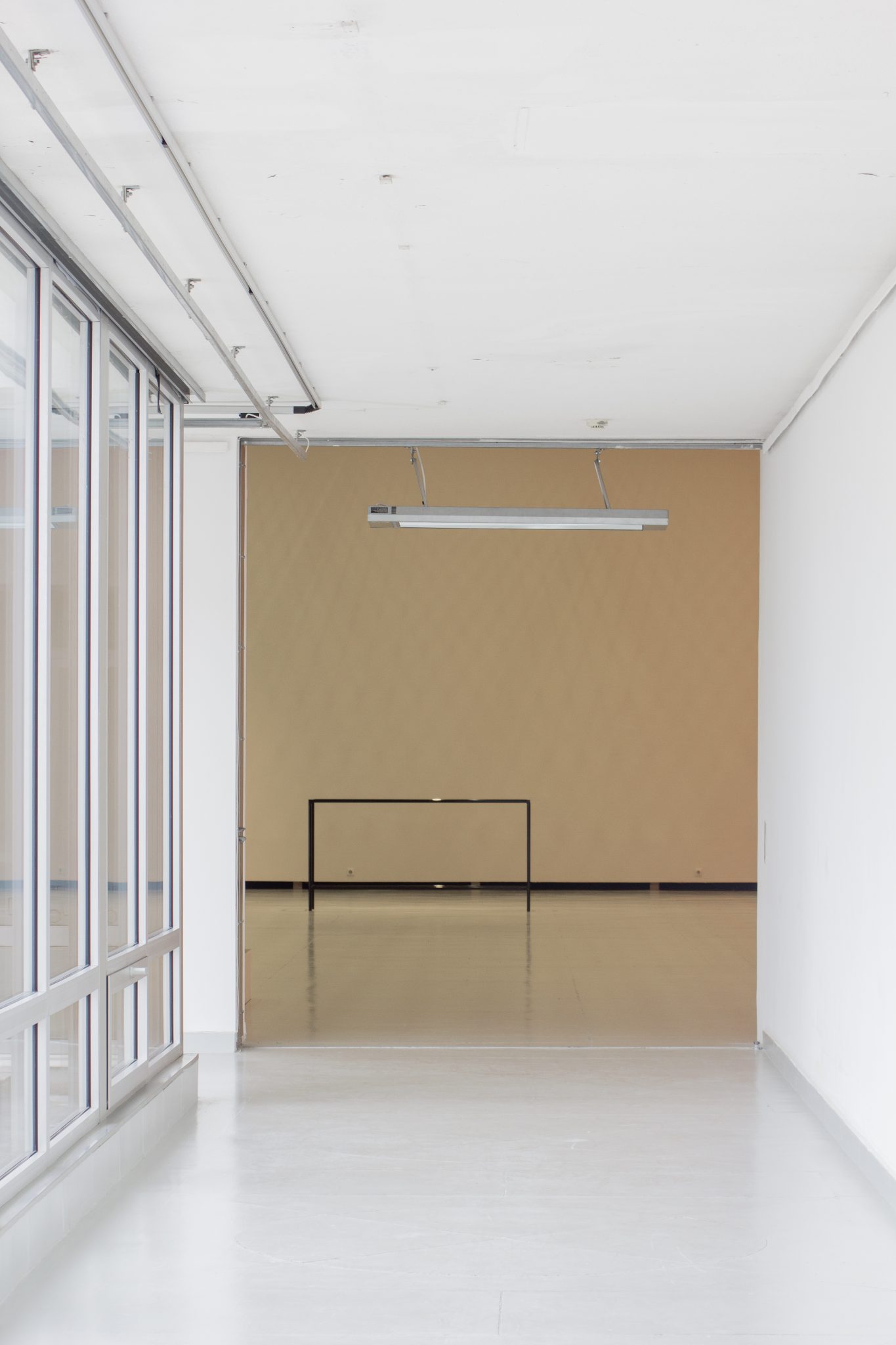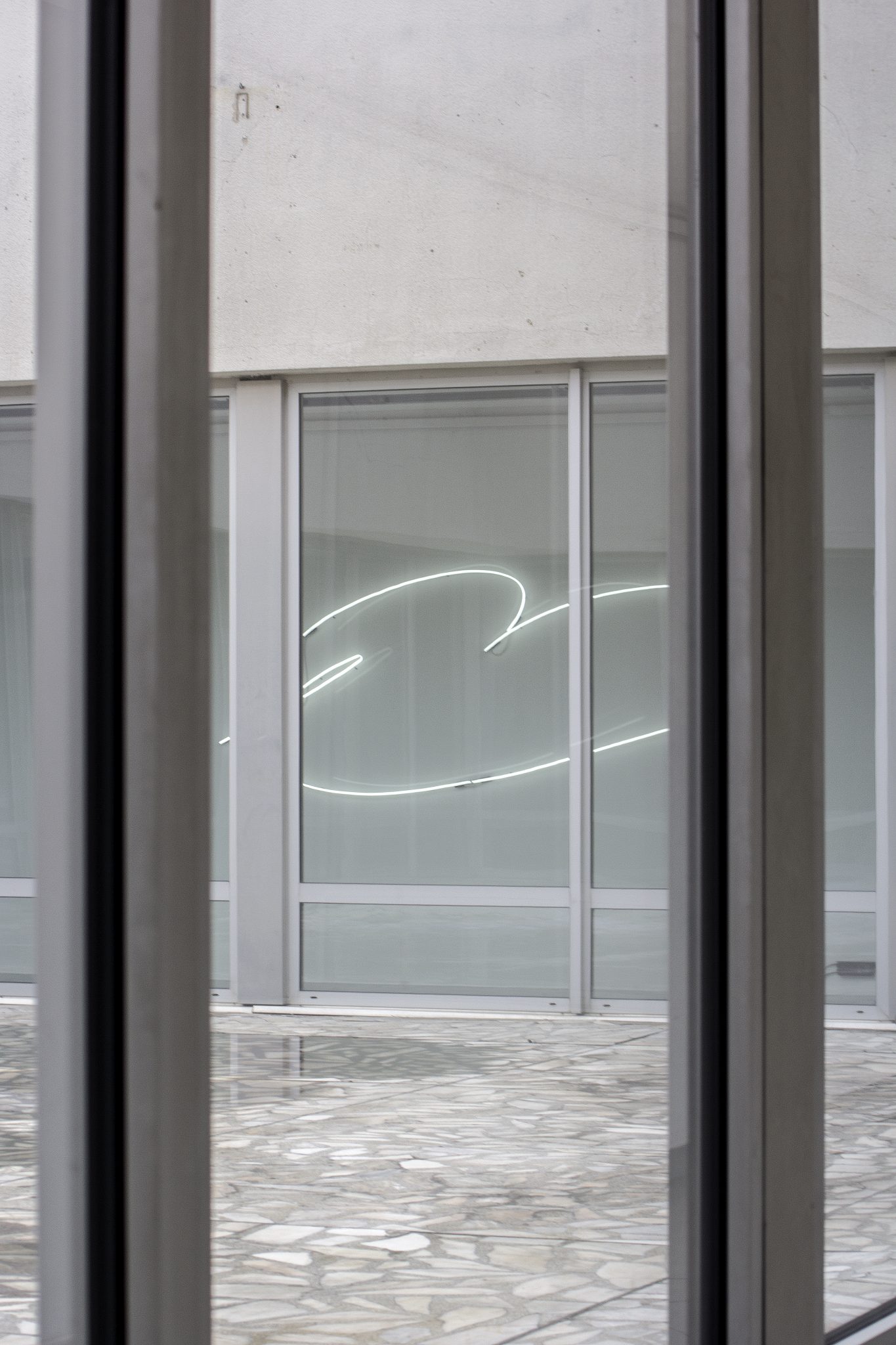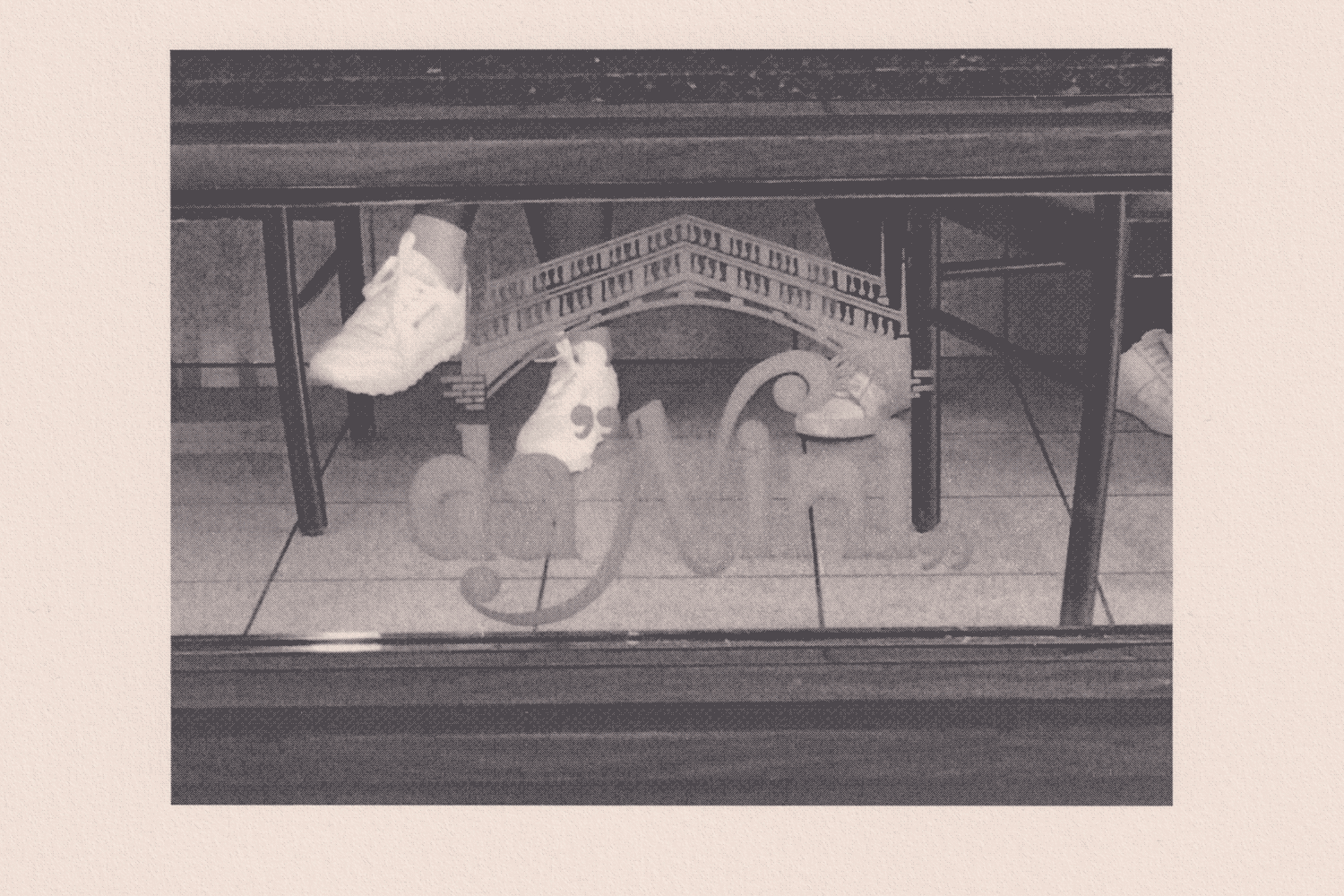
Occupying the main exhibition hall of the CAC, Double double is Laura Kaminskaitė’s most comprehensive solo presentation to date. The exhibition is an exercise in handling information sensitively, which combines new works and scenarios with reappearances and reappraisals of the last decade of the artist’s activity.
In her practice, the Vilnius-based artist initiates events through objects, language, abstract forms, and subtle alterations to common routines and situations. Using efficient and familiar processes of mediation, her works generate imaginary relationships, textures, rhythms, and movements, that choreograph exhibitions, scenarios, and narratives for the viewer. Commenting on the present conditions while conjuring events in the past and future, it is the design of a parasitic language that inhabits existing things with new thoughts.
Kaminskaitė’s practice deploys a keen awareness to logics of display, which is also apparent in her frequent work as an exhibition designer and curatorial collaborator. Activated in strangely vague times, Double double compares and conflates practices of presentation that reside in, or grab, daily items.
It considers the exhibition format itself as a technology. A routine for the display and apprehension of information, exhibitions are always in a reciprocal relationship with the objects, ideas, bodies, and interactions within it. Artworks double the logics of their means of display, and exhibitions overlap and double the artworks in turn. This interplay induces a certain style of movement and awareness, a tempo that connects physical to mental shifts. You bring your day into the exhibition and leave carrying its rhythms and logics back out into the world. Sometimes the work only appears later on, and then reverberates in your mind and emerges at unexpected moments along your subsequent journeys. Double double tests how this promise and awareness changes the shape of our activities and relationships, generating a succession of double takes by addressing the exhibition as peculiar system that contains and refracts the everyday.
The exhibition echoes a street at both day and night, incorporating modes of presentation from the urban environment and social spaces, as well as large flights of steps that recall lofty locales and civic architecture. Like street mimes, a pair of performers enact subtle movements and activate the exhibition. A portion of the exhibition hall is bathed in a pink light, producing an imaginary colour that is constructed in the mind. Double double is a space for social being that provides volume for conversation to erupt and for the body and mind to wander. One can never be sure what to expect, or if the show will be the same at each repeated visit. You might encounter other curious individuals occupying the exhibition, reflecting, inspecting, investigating, lingering, and perhaps sharing in acts of intimate presentation. Distributed conversations are guaranteed.
Laura Kaminskaitė (b.1984) has exhibited her works in solo exhibitions at P////AKT, Amsterdam; Editorial, Vilnius; Podium, Oslo; Vermilion Sands in Copenhagen; and Objectif Exhibitions, Antwerp; amongst others. Her work was featured in the XII Kaunas Biennial (2019), the Kilometer of Sculpture (2015), and the XII Baltic Triennial (2014-2016), as well as in group exhibitions in Prague, Vilnius, Amsterdam, Kaunas, Riga, Munich, Bergen, Krakow, Helsinki, Šiauliai, Athens, Malmö, Vienna, Moscow, Rome, and Minsk. She also regularly operates as an exhibition designer and collaborator on projects at home and abroad.
Post Brothers is a critical enterprise that includes Matthew Post (b. 1984, Los Angeles), an enthusiast, word processor, and curator working from a small village near Białystok, Poland. From 2016 through 2019, Post Brothers was the curator at Kunstverein München in Munich, Germany. He has curated exhibitions and presented projects in Poland, Mexico, Canada, the United States, Portugal, Denmark, Greece, Estonia, Germany, Austria, Lithuania, Italy, Sweden, Finland, Belgium, Latvia, The Netherlands, and China. His essays and articles have been published in numerous art and culture magazines, as well as in a litany of artist publications and exhibition catalogues.
